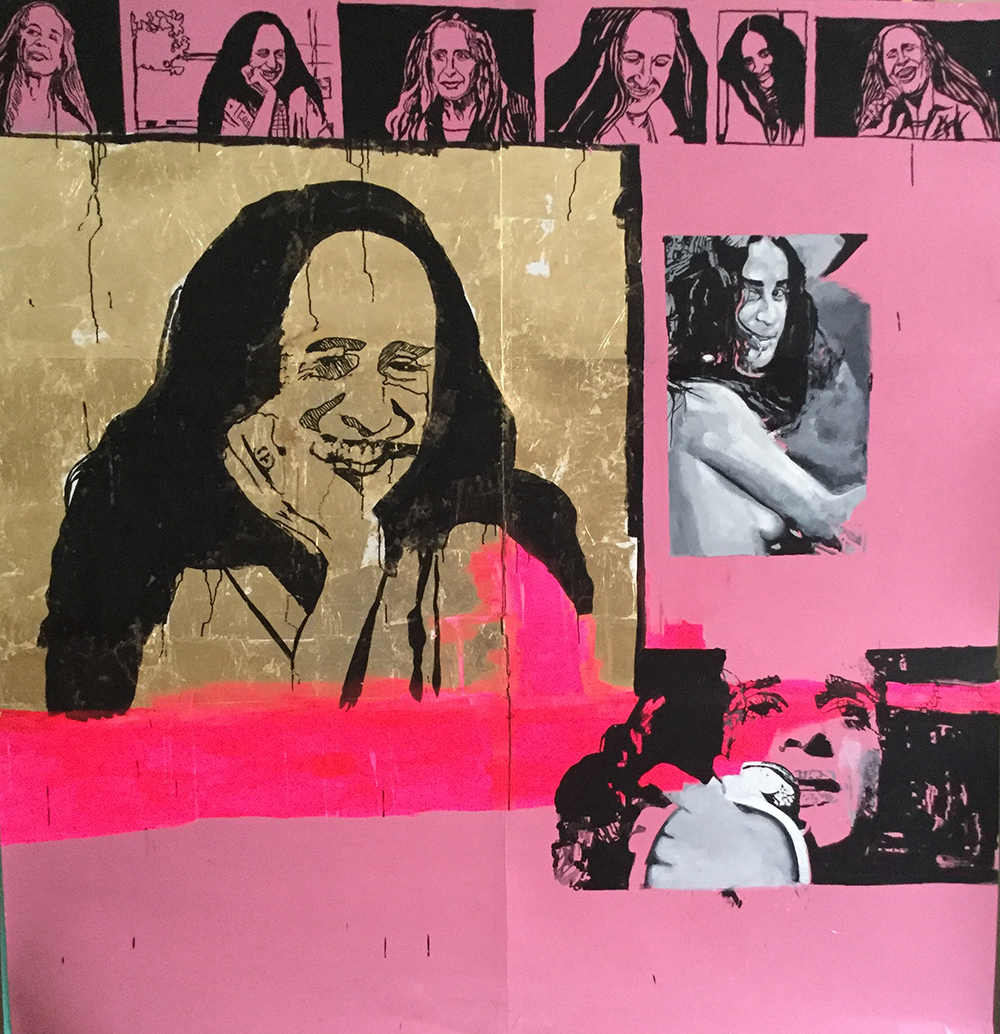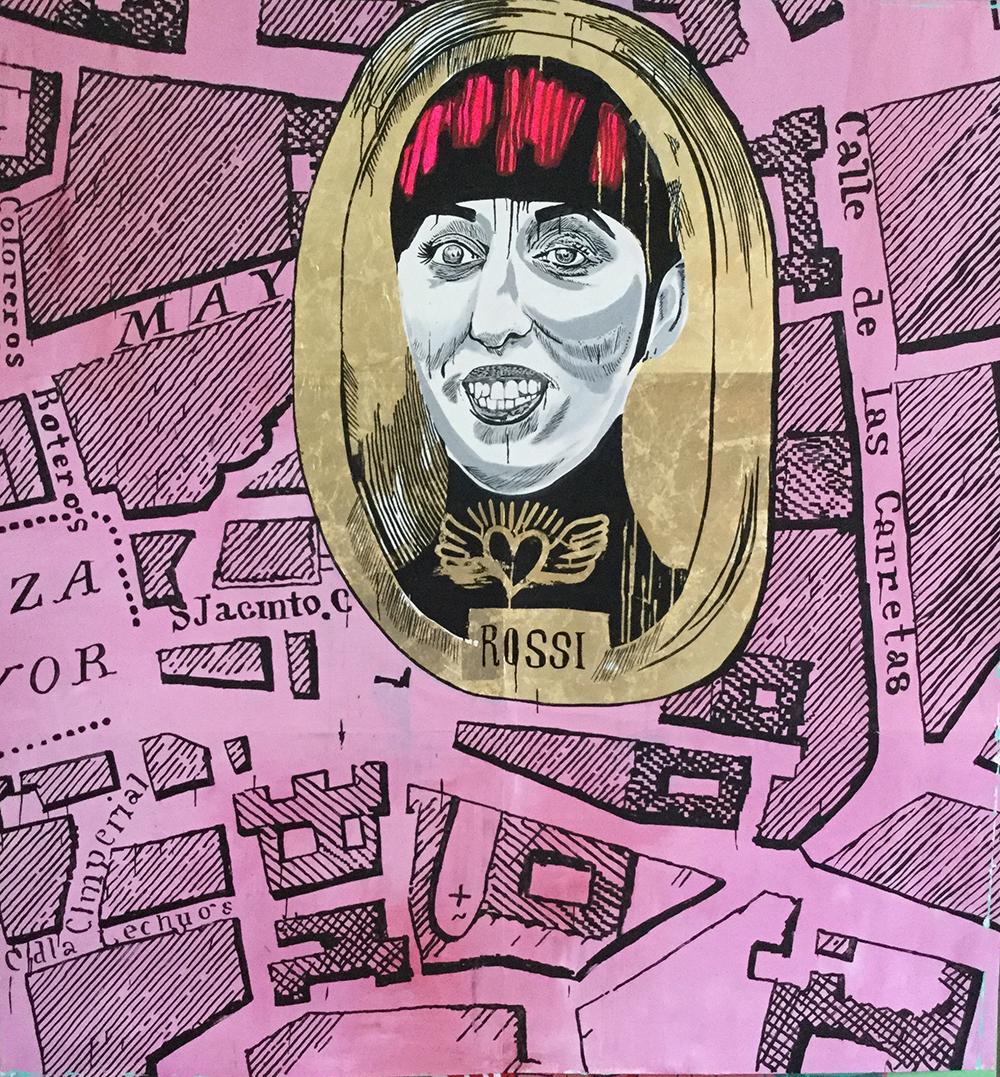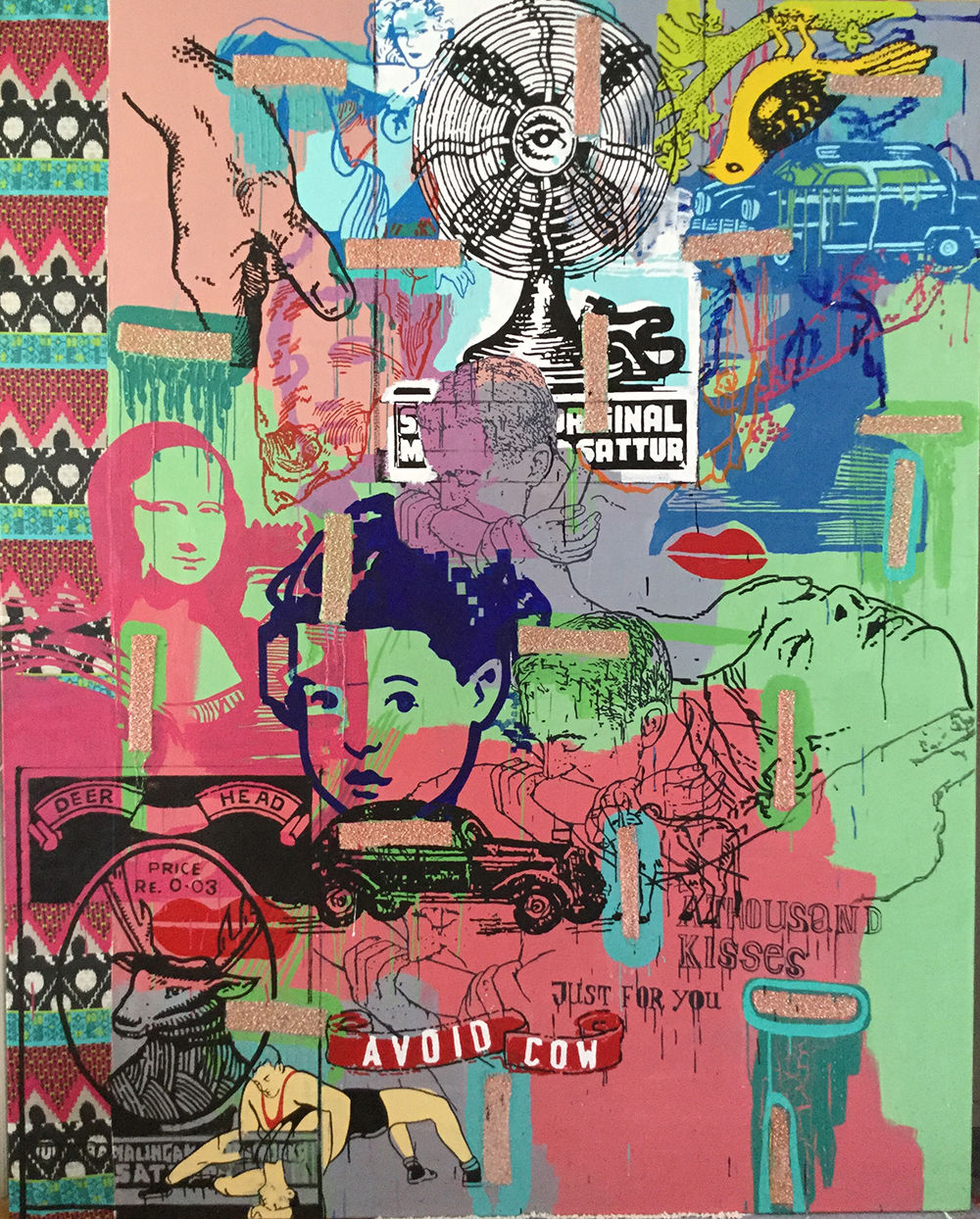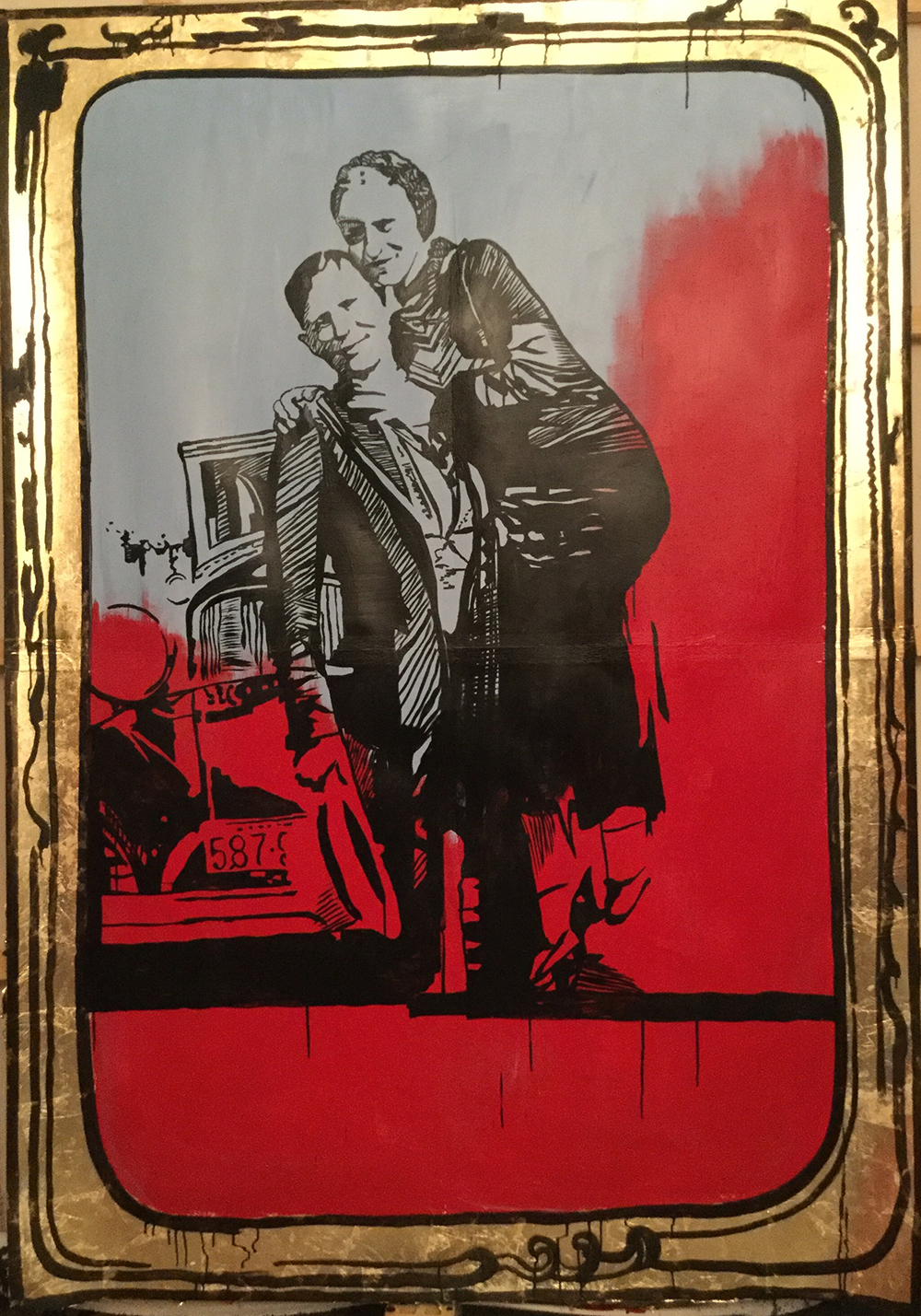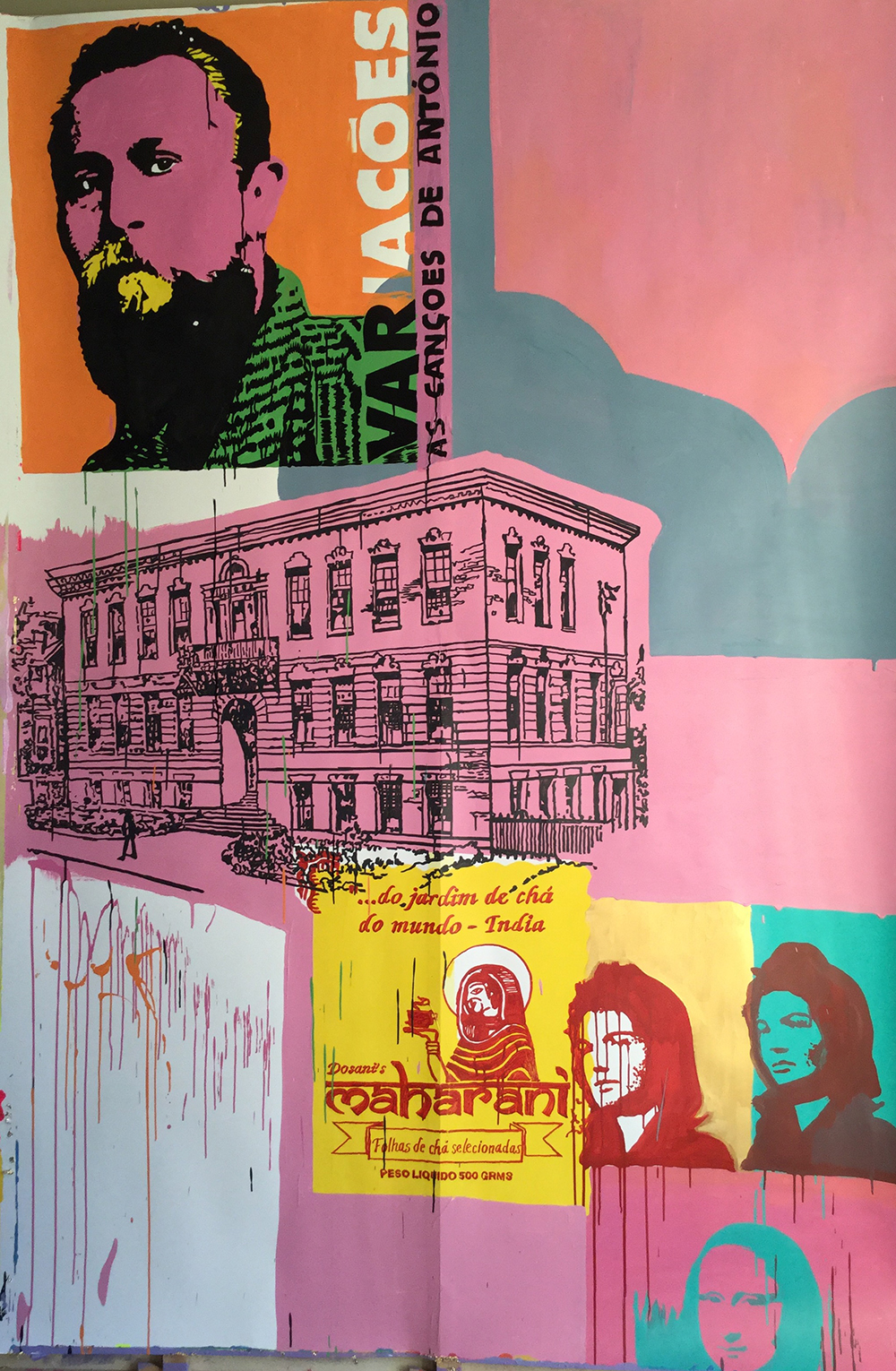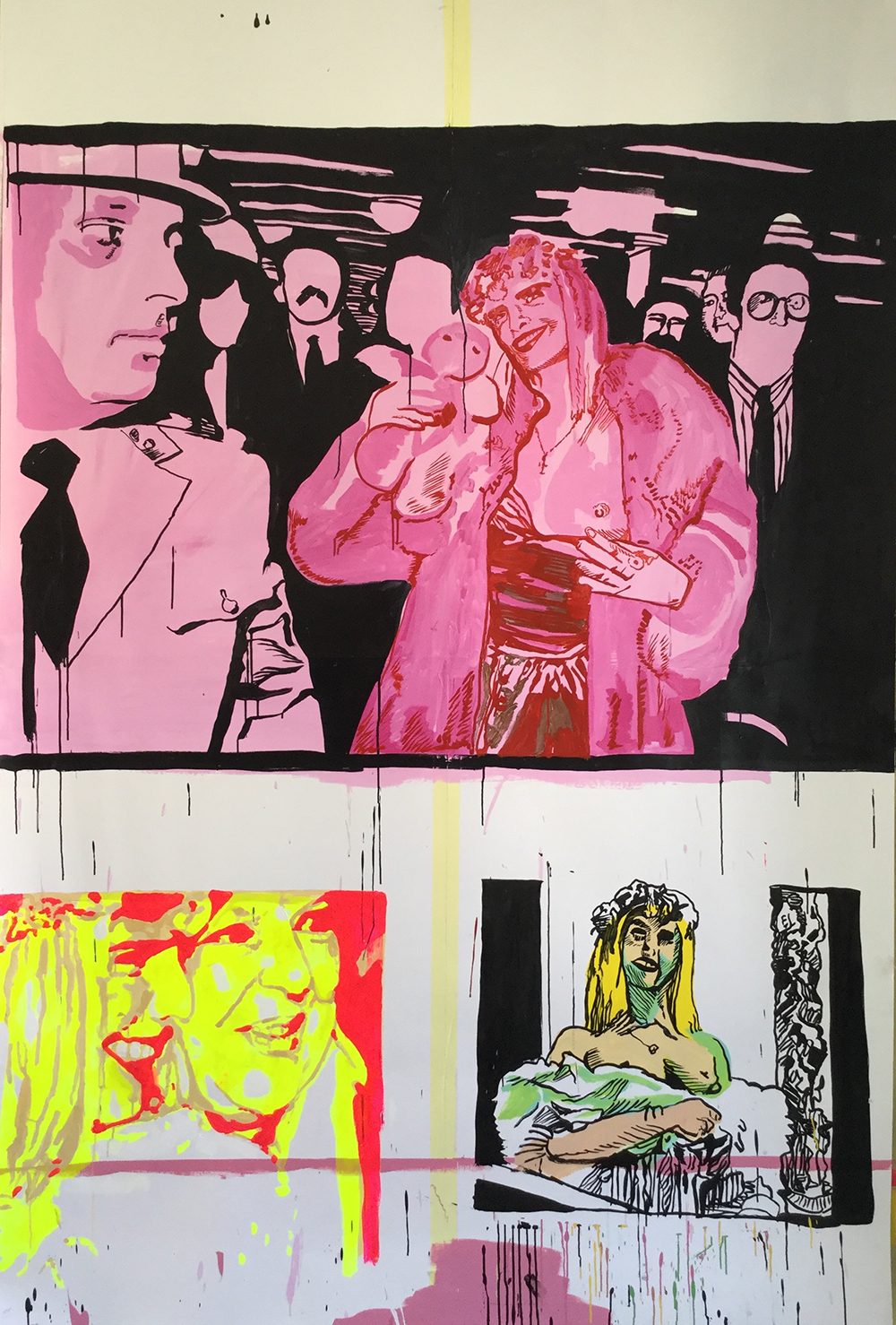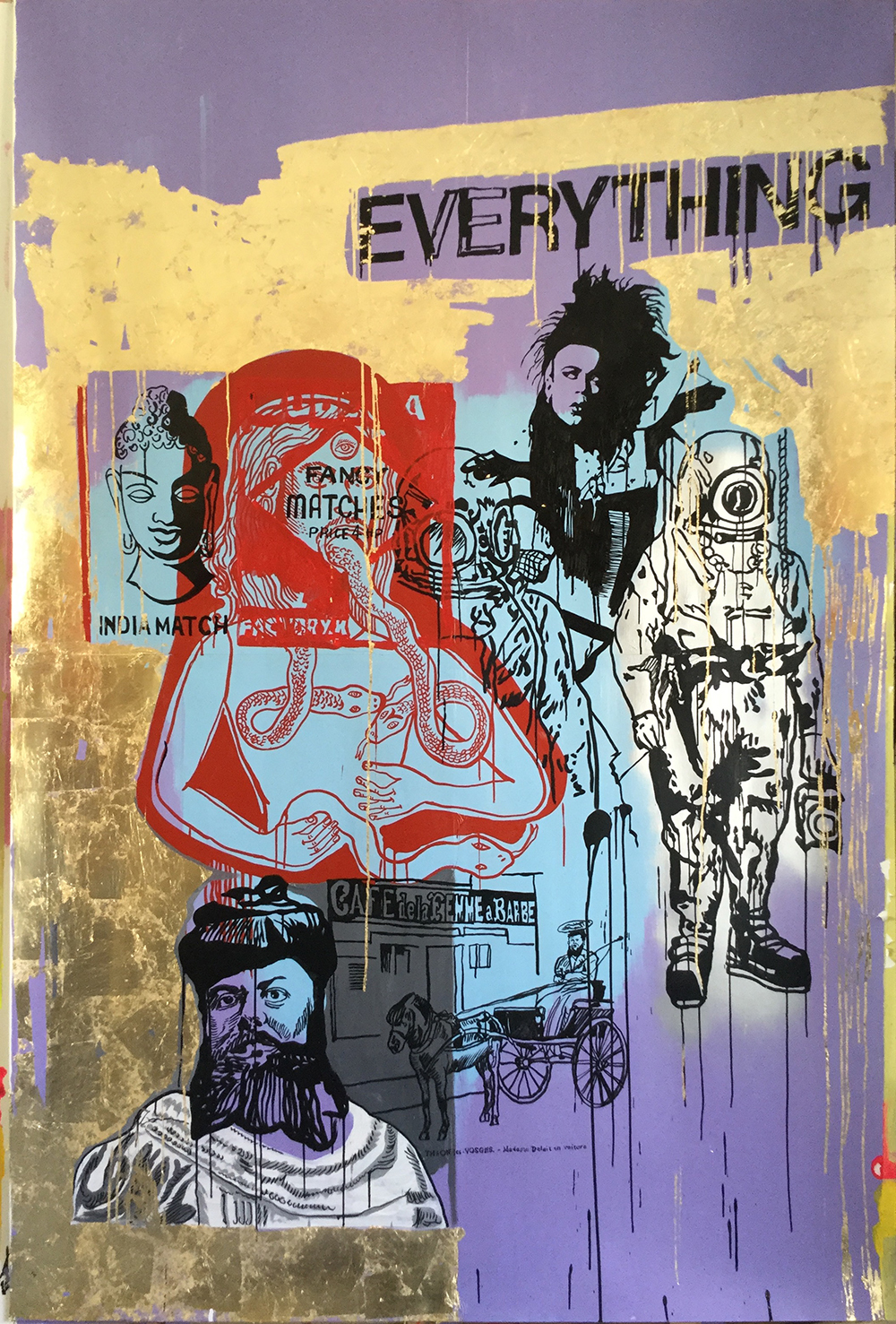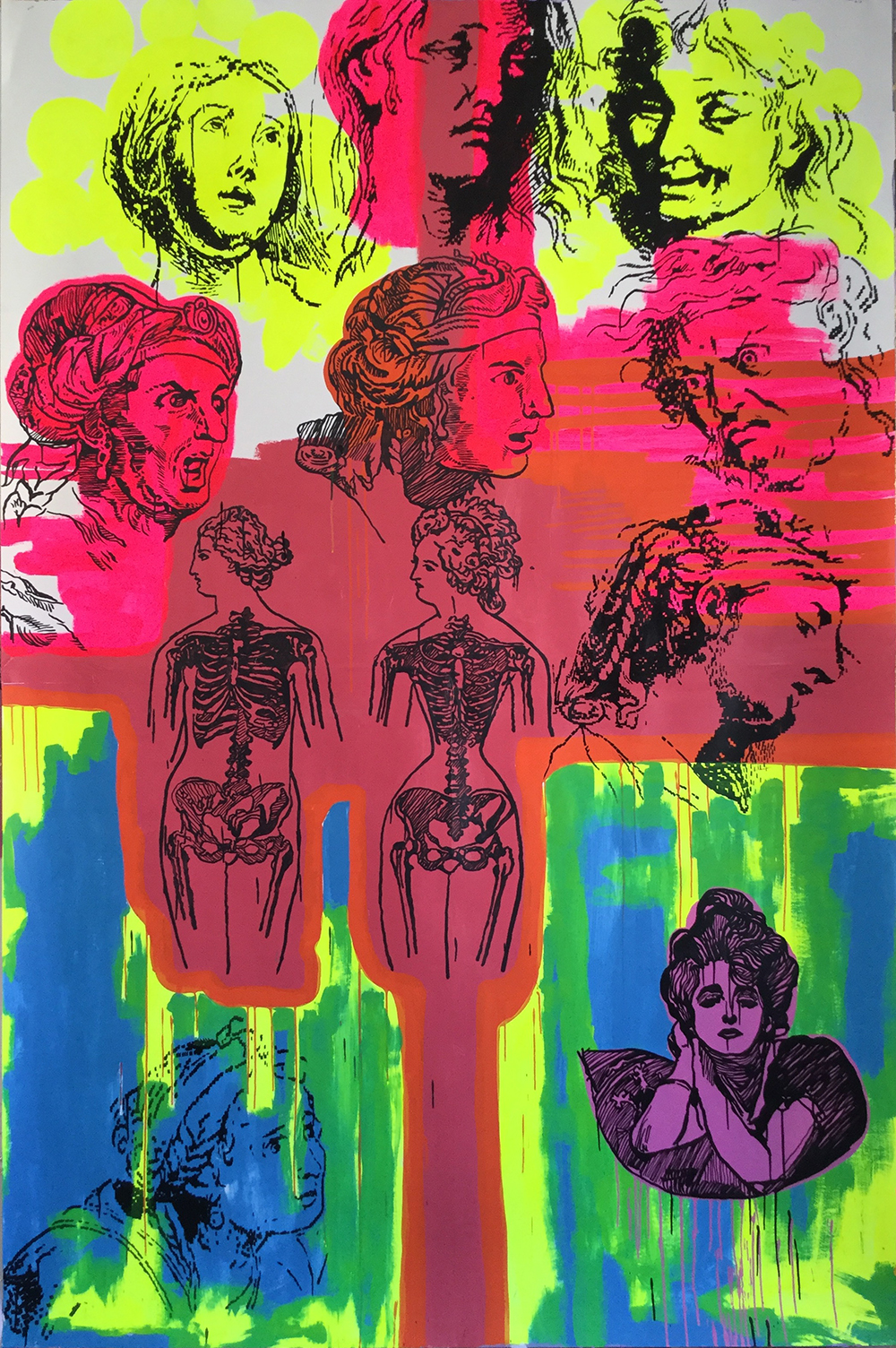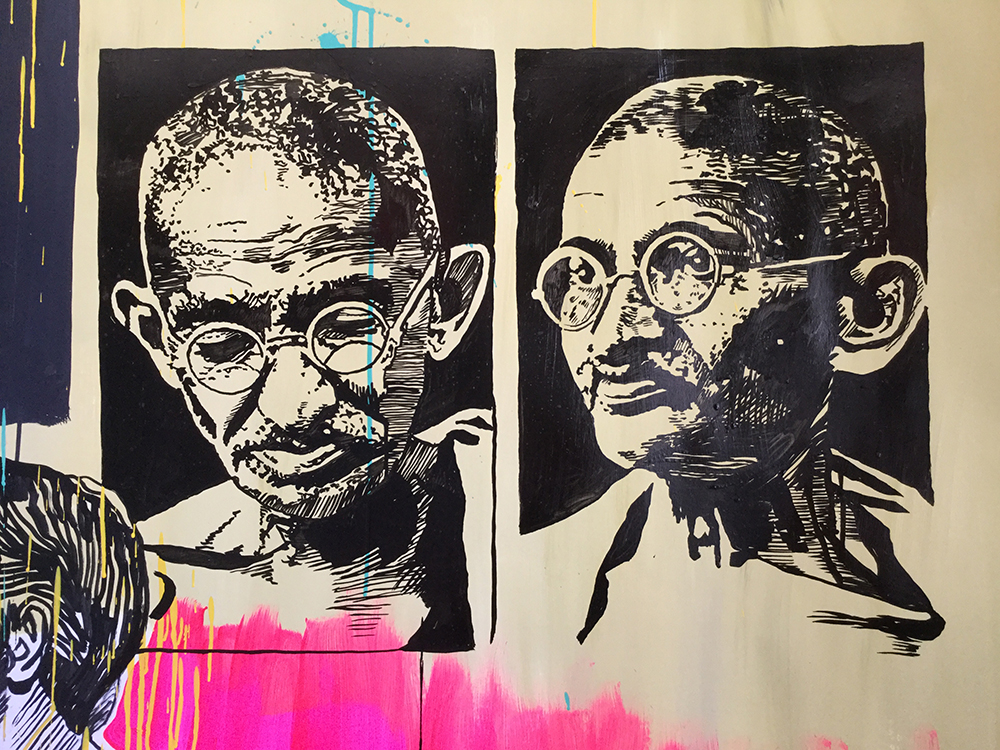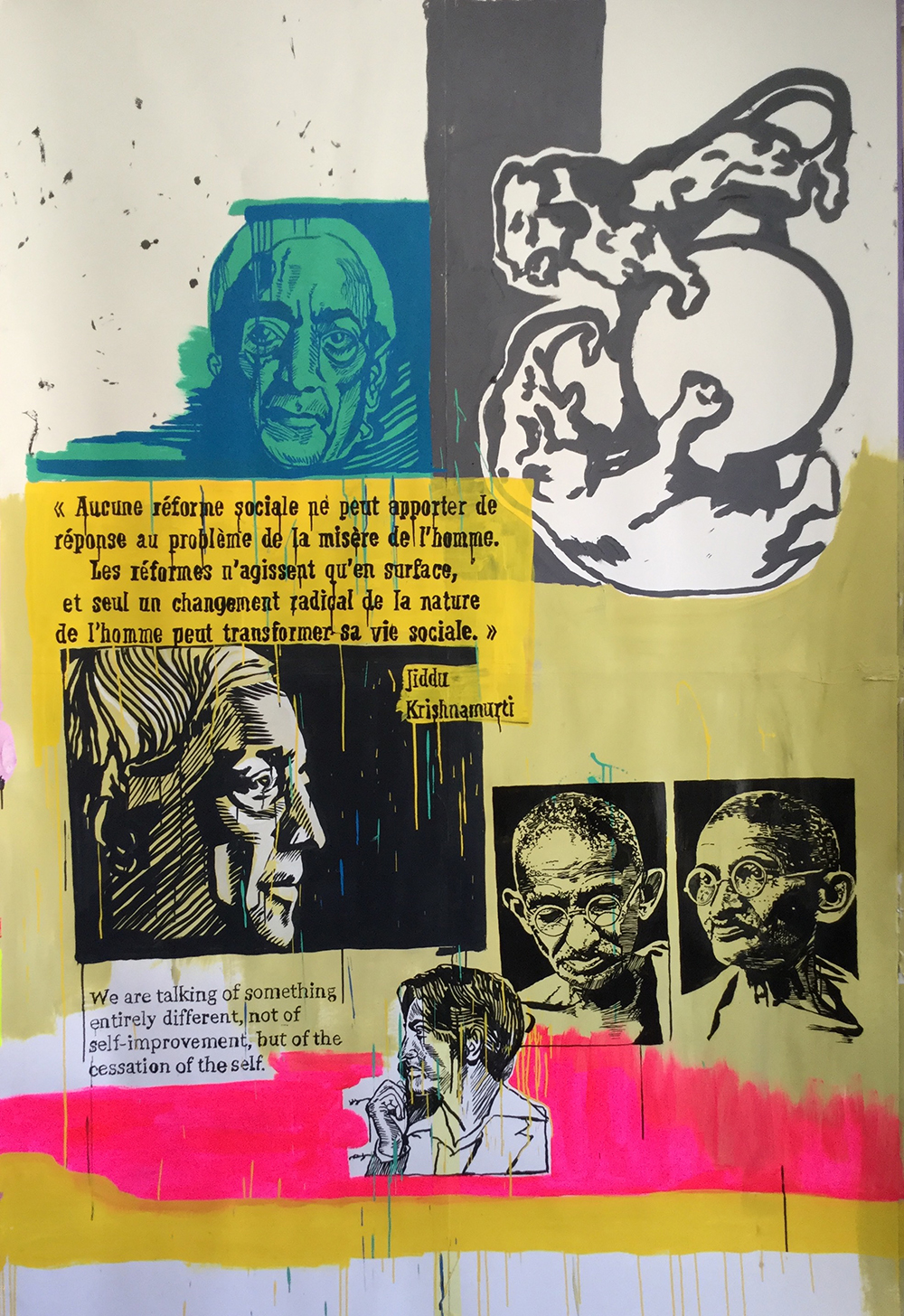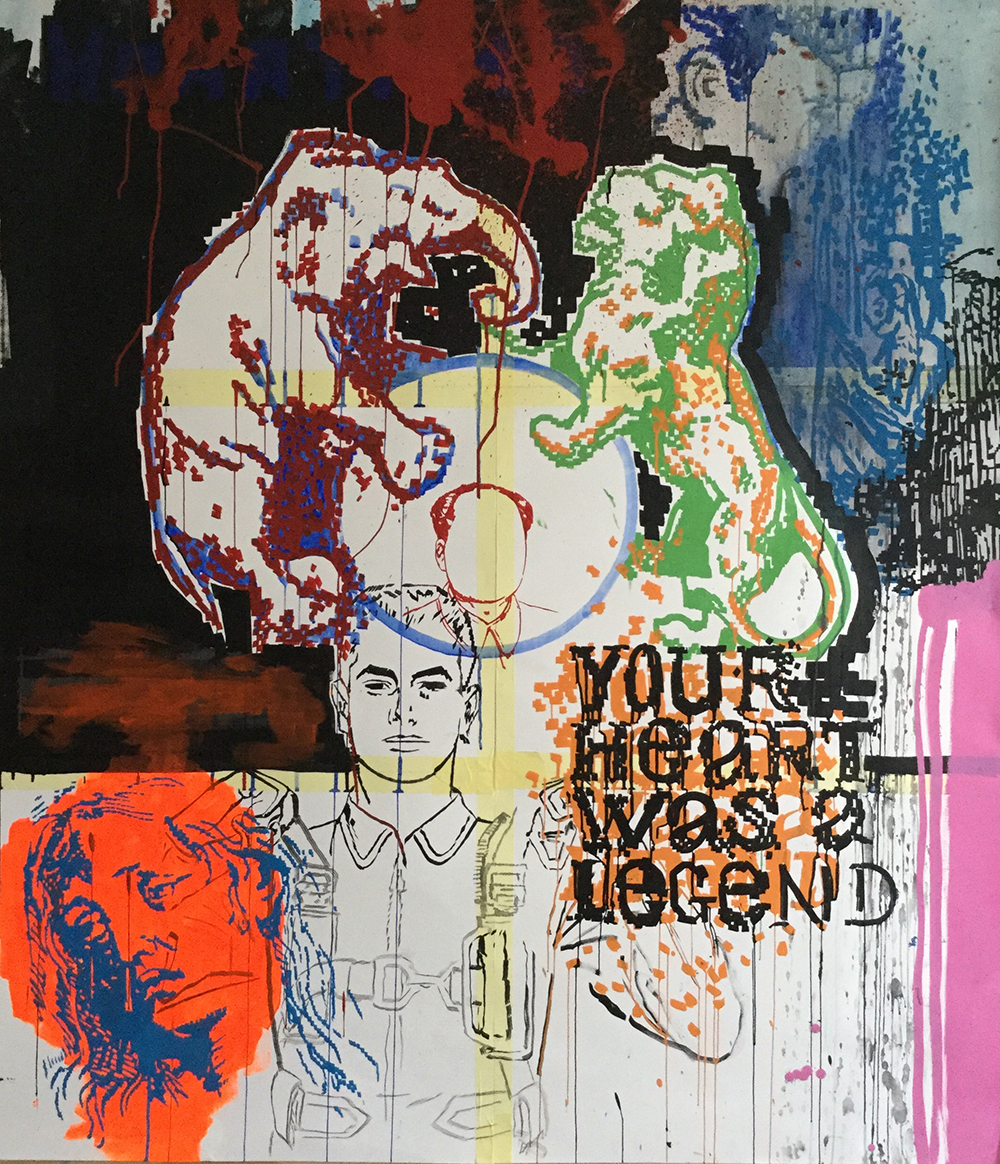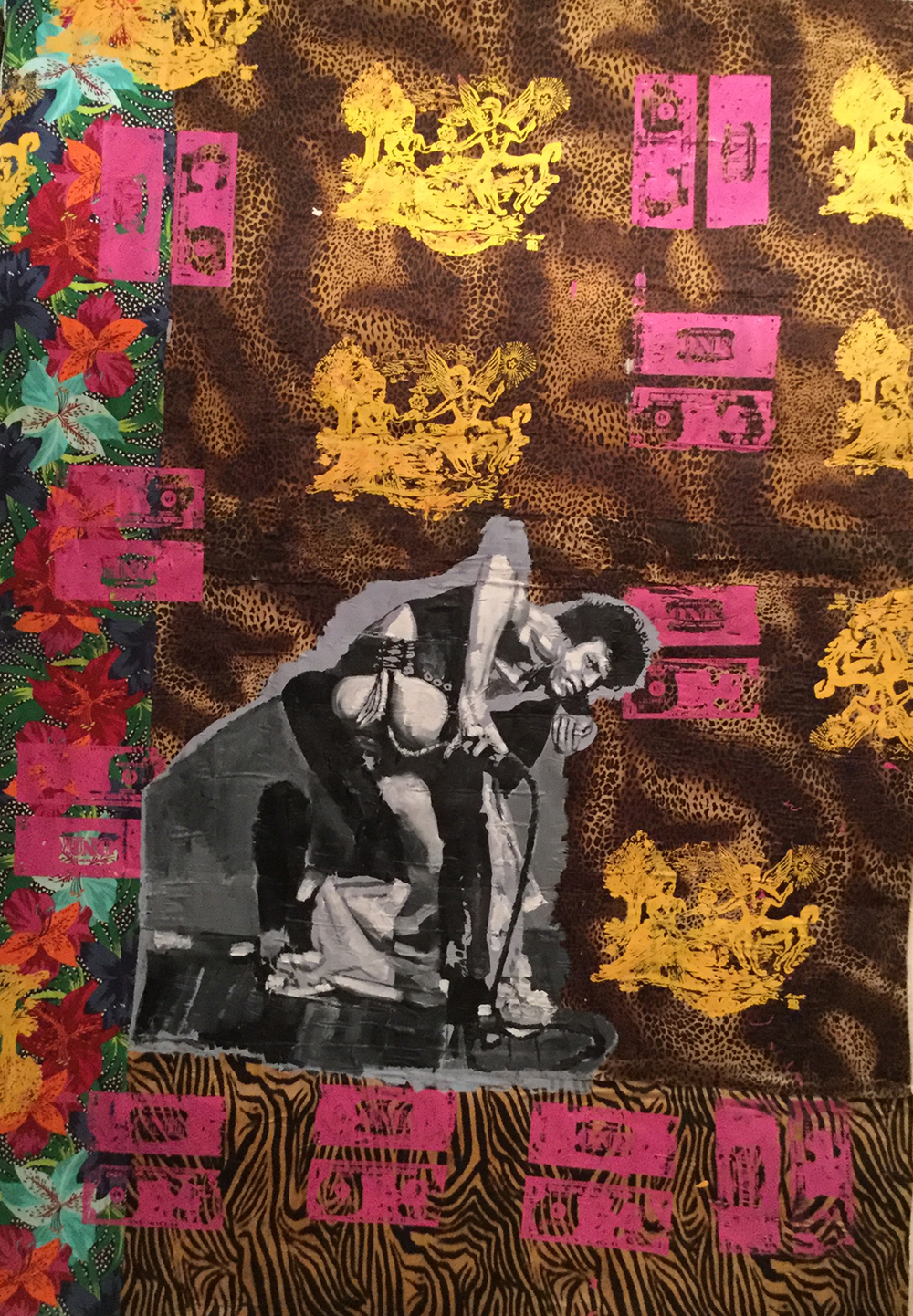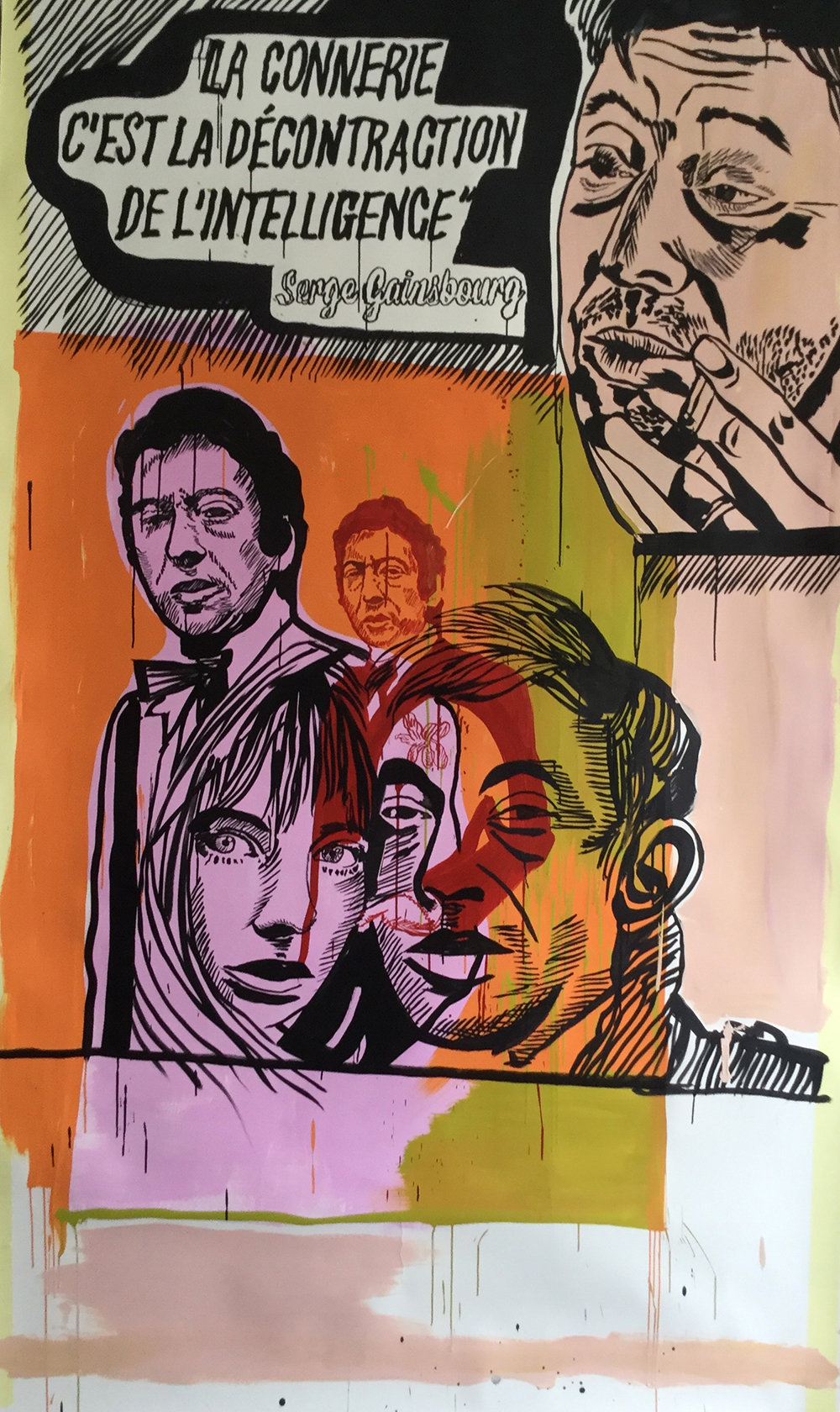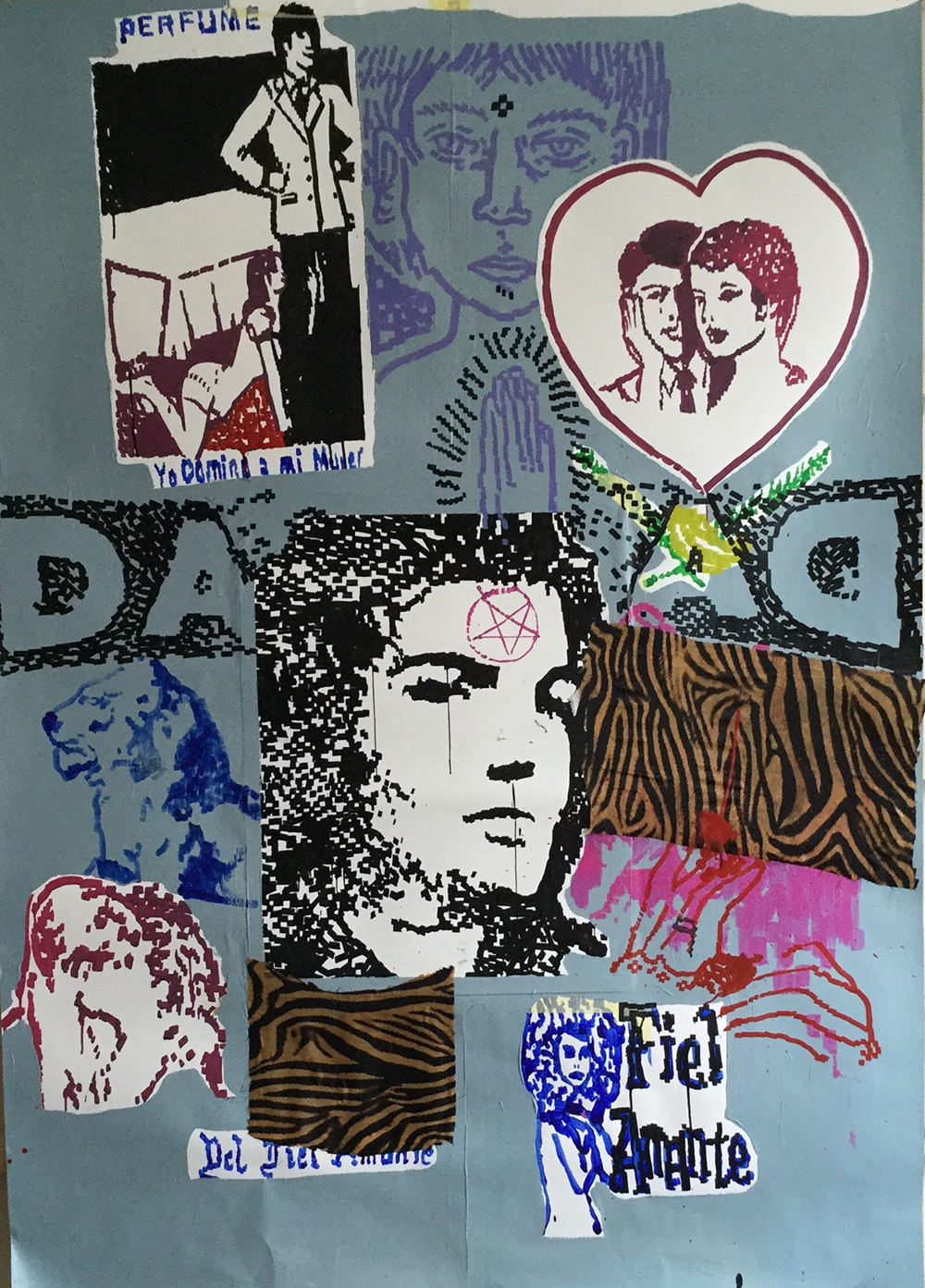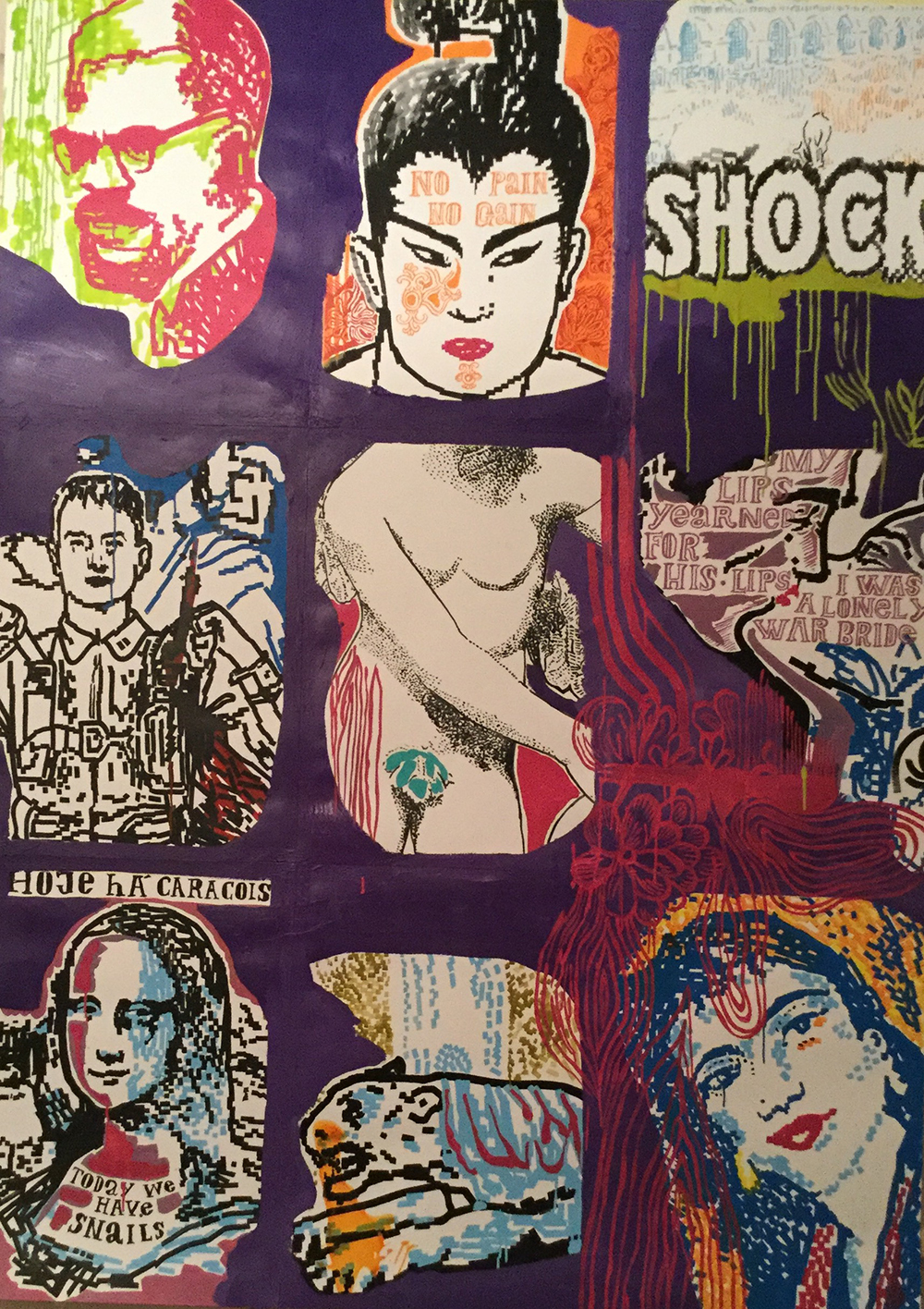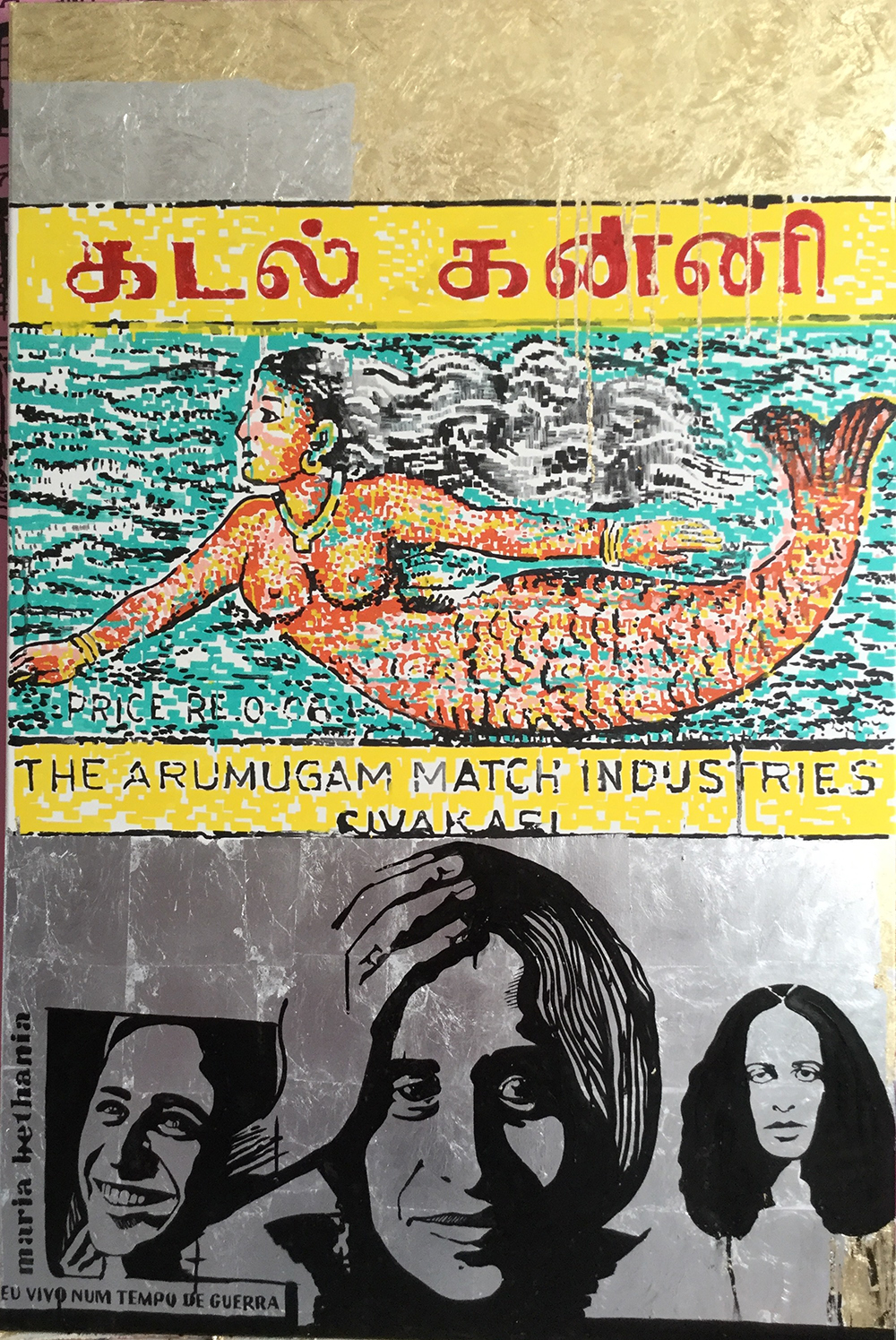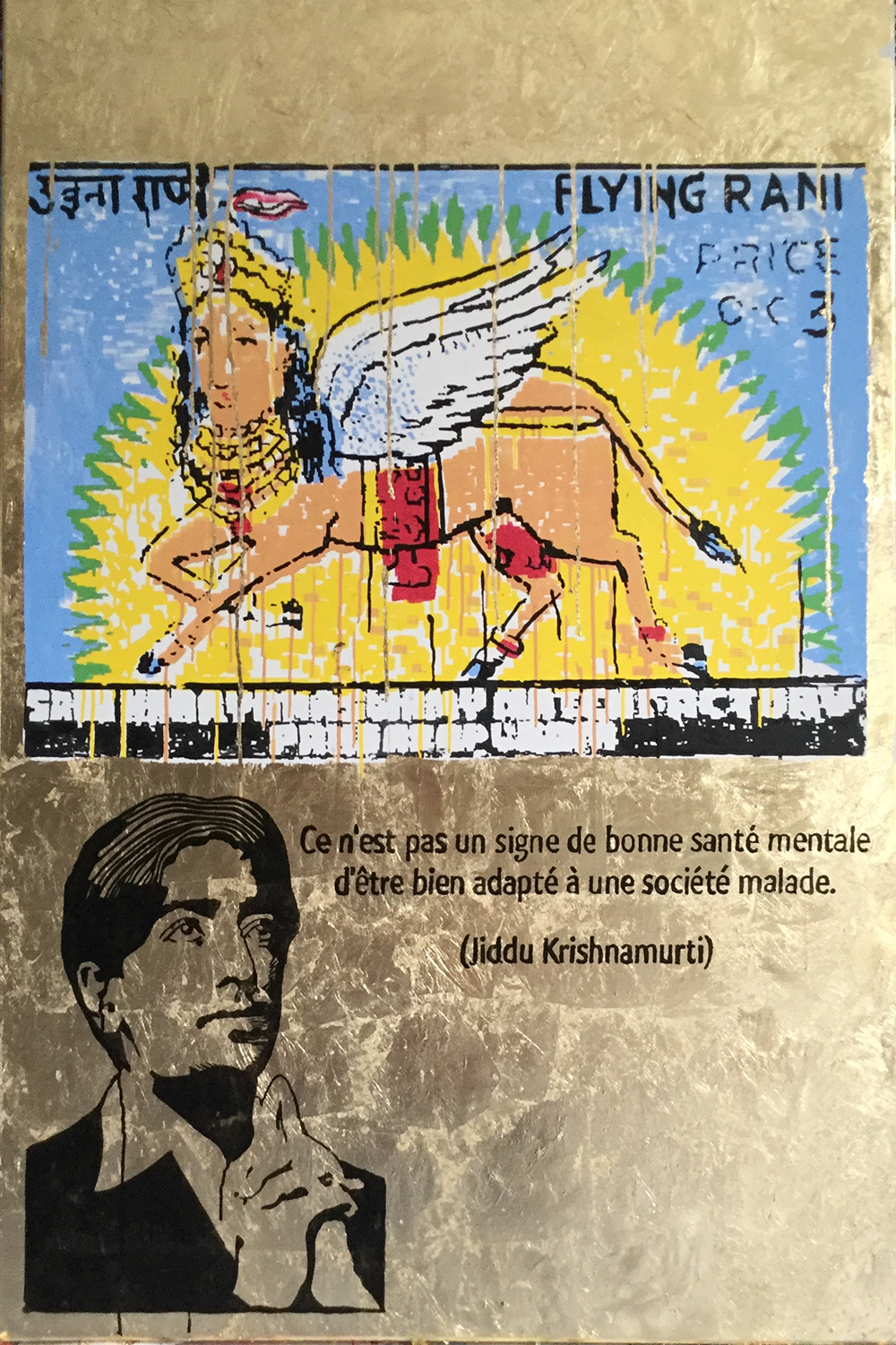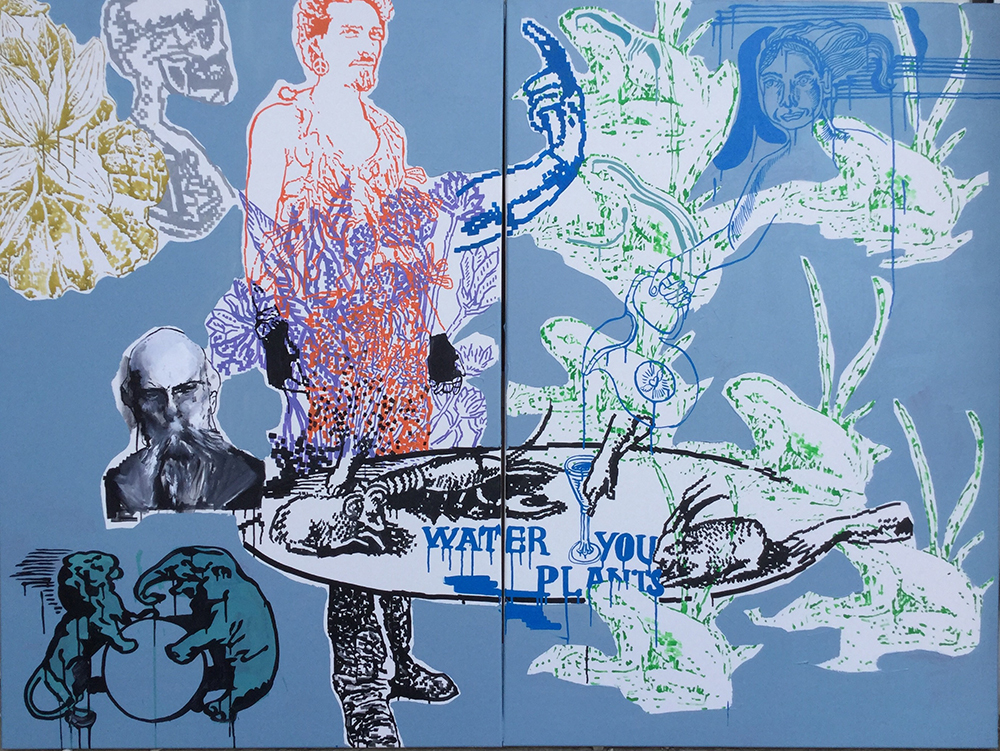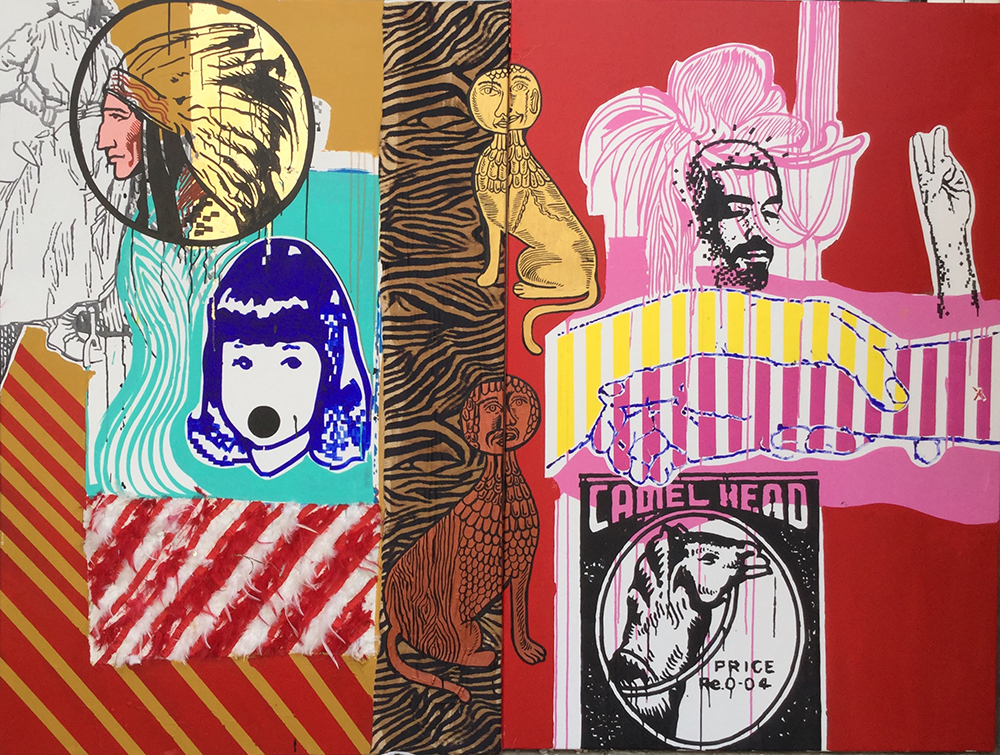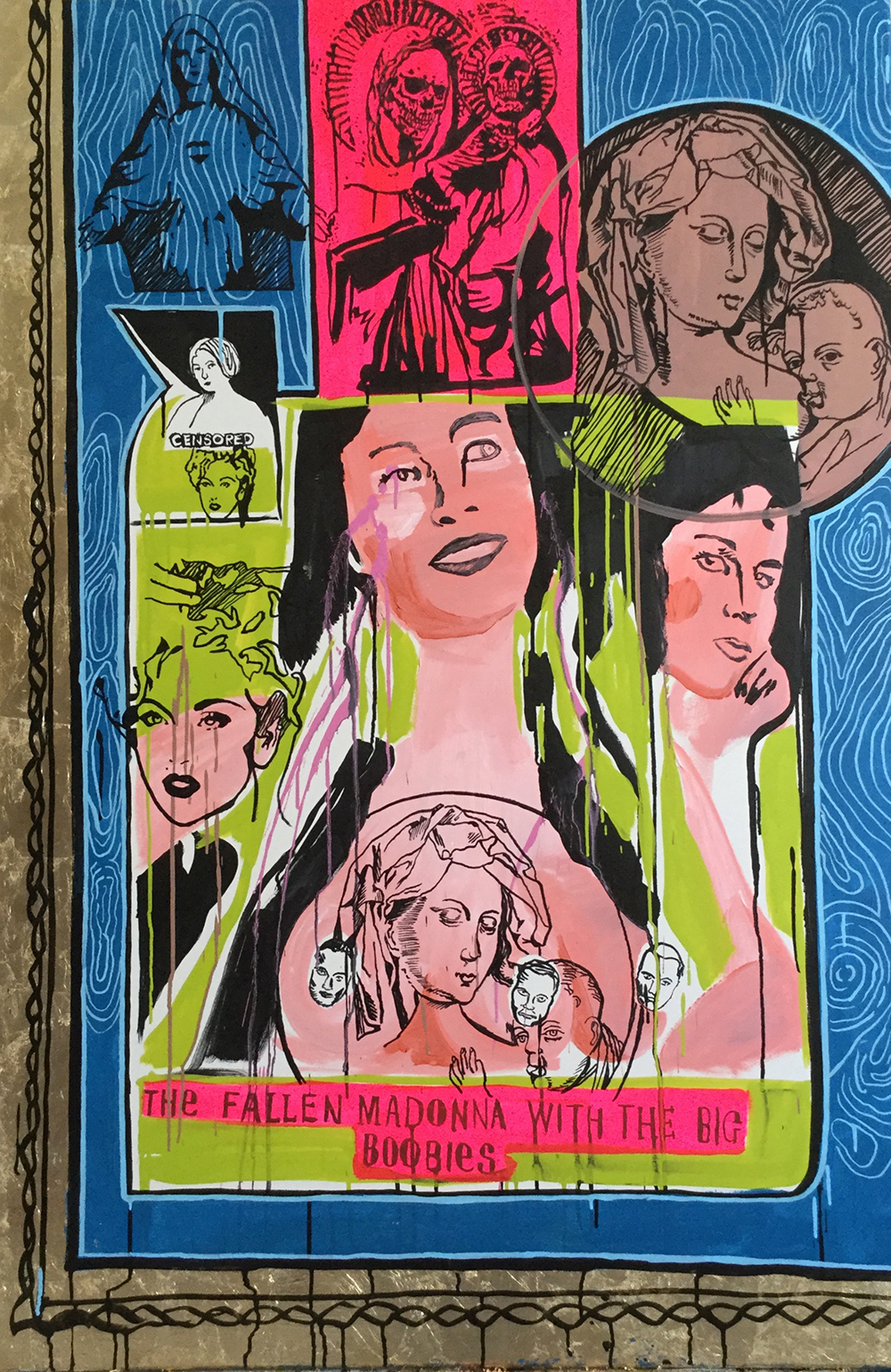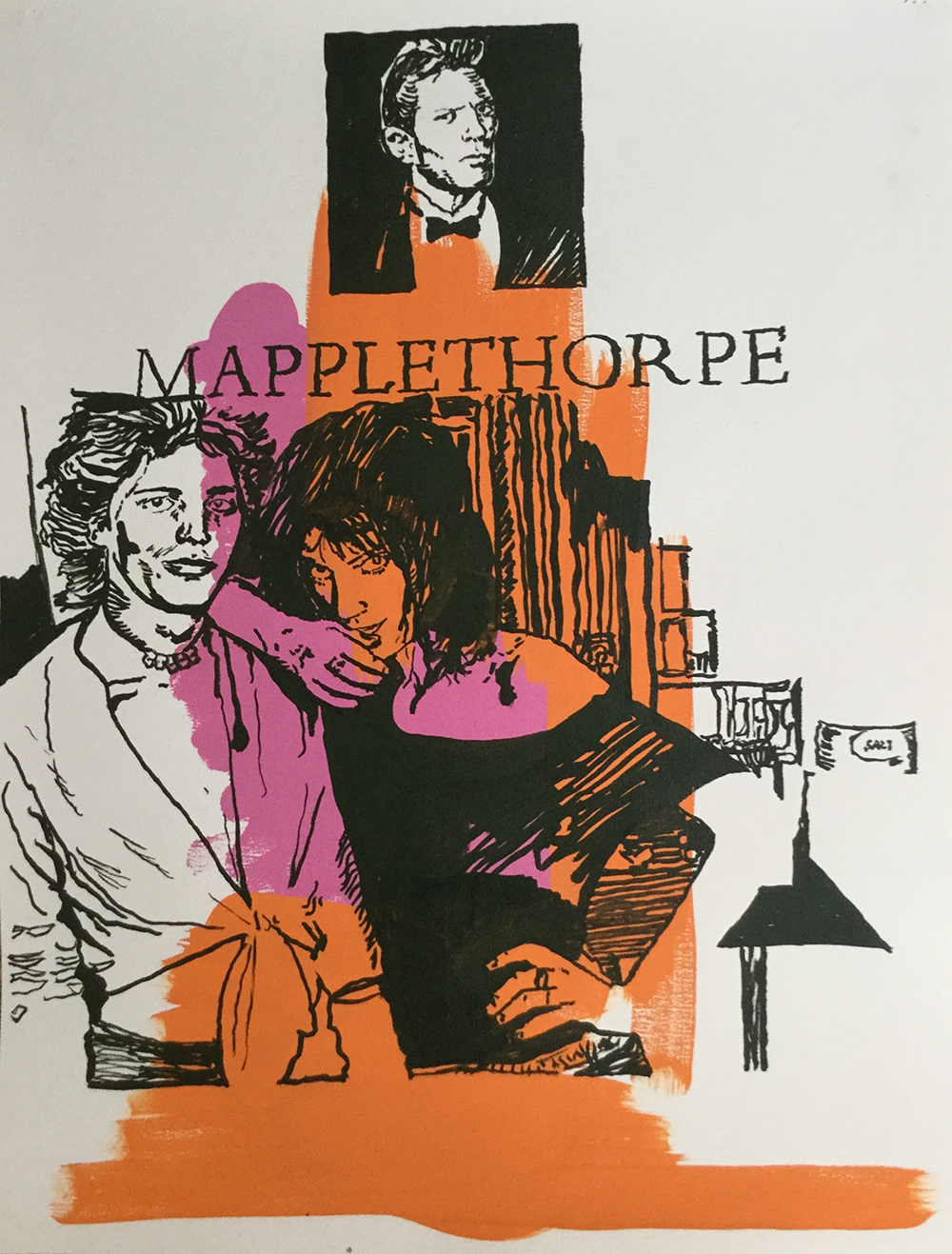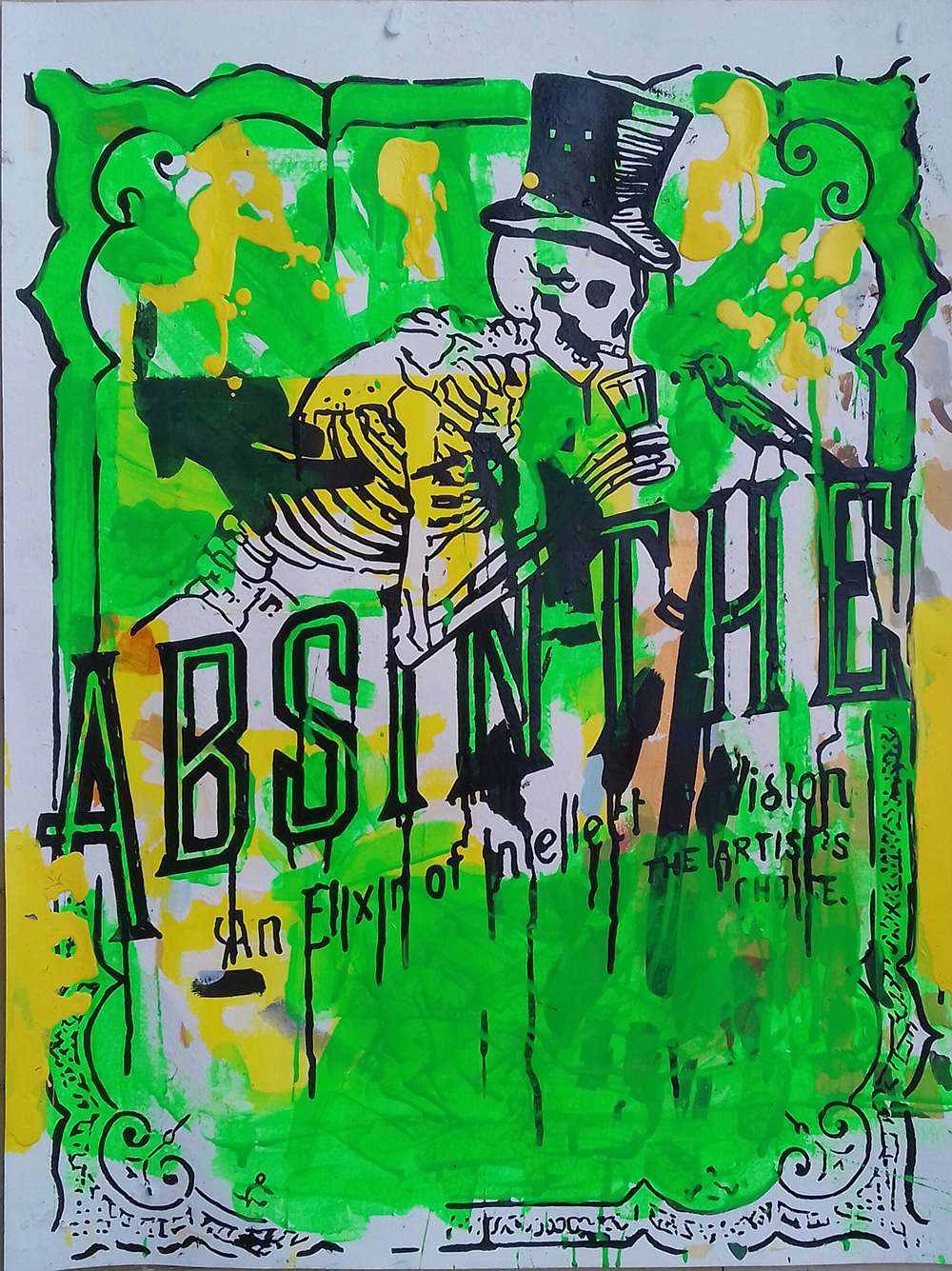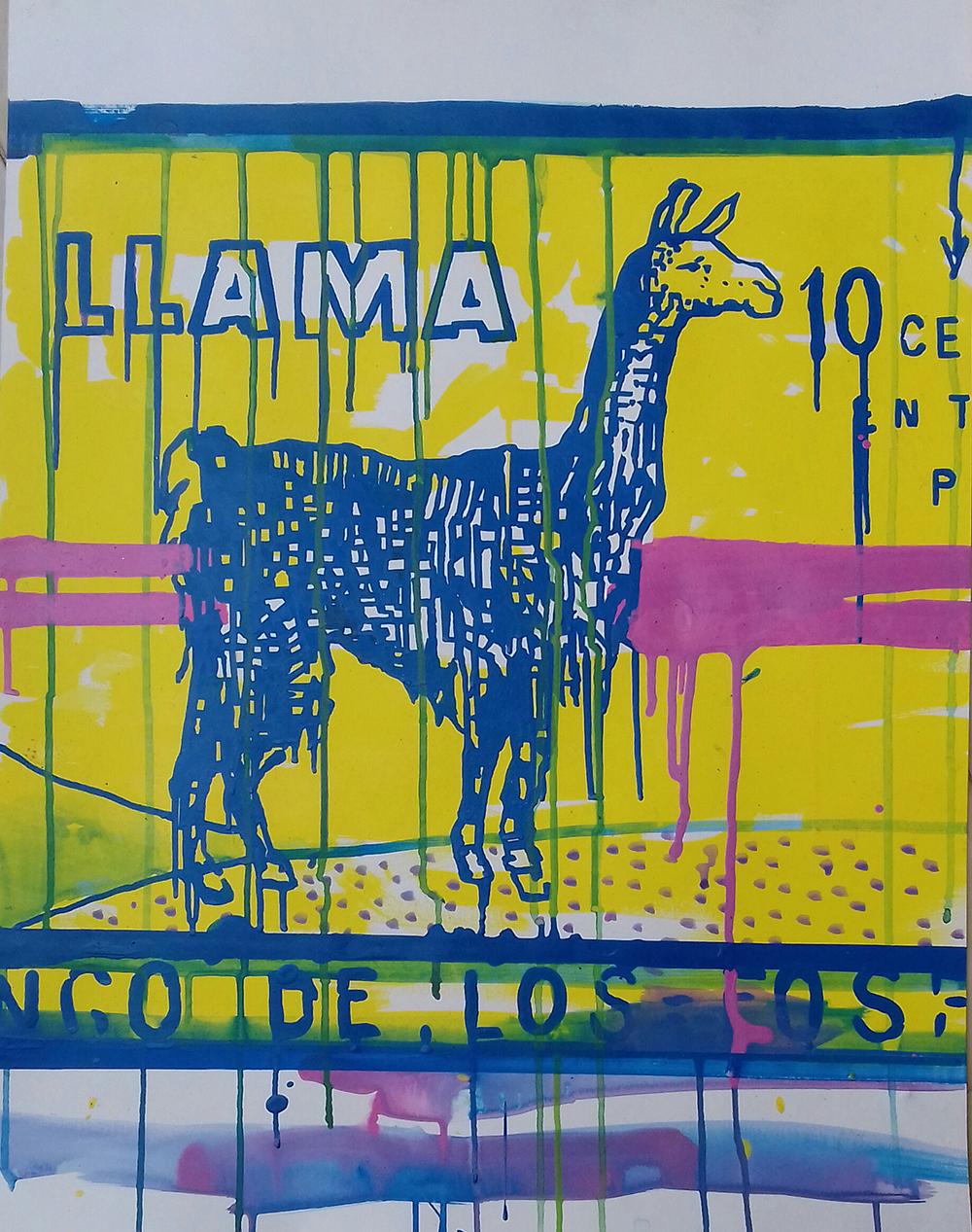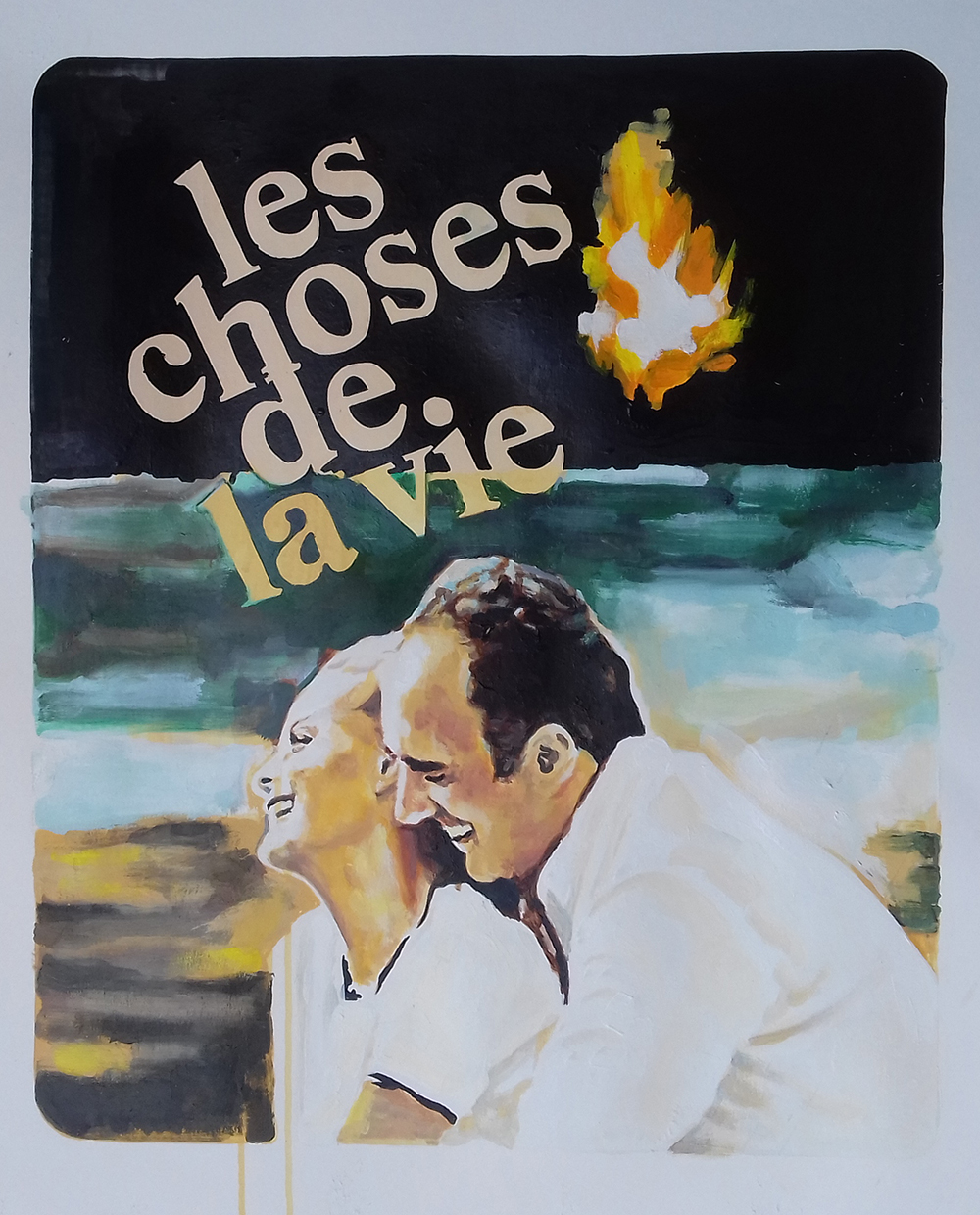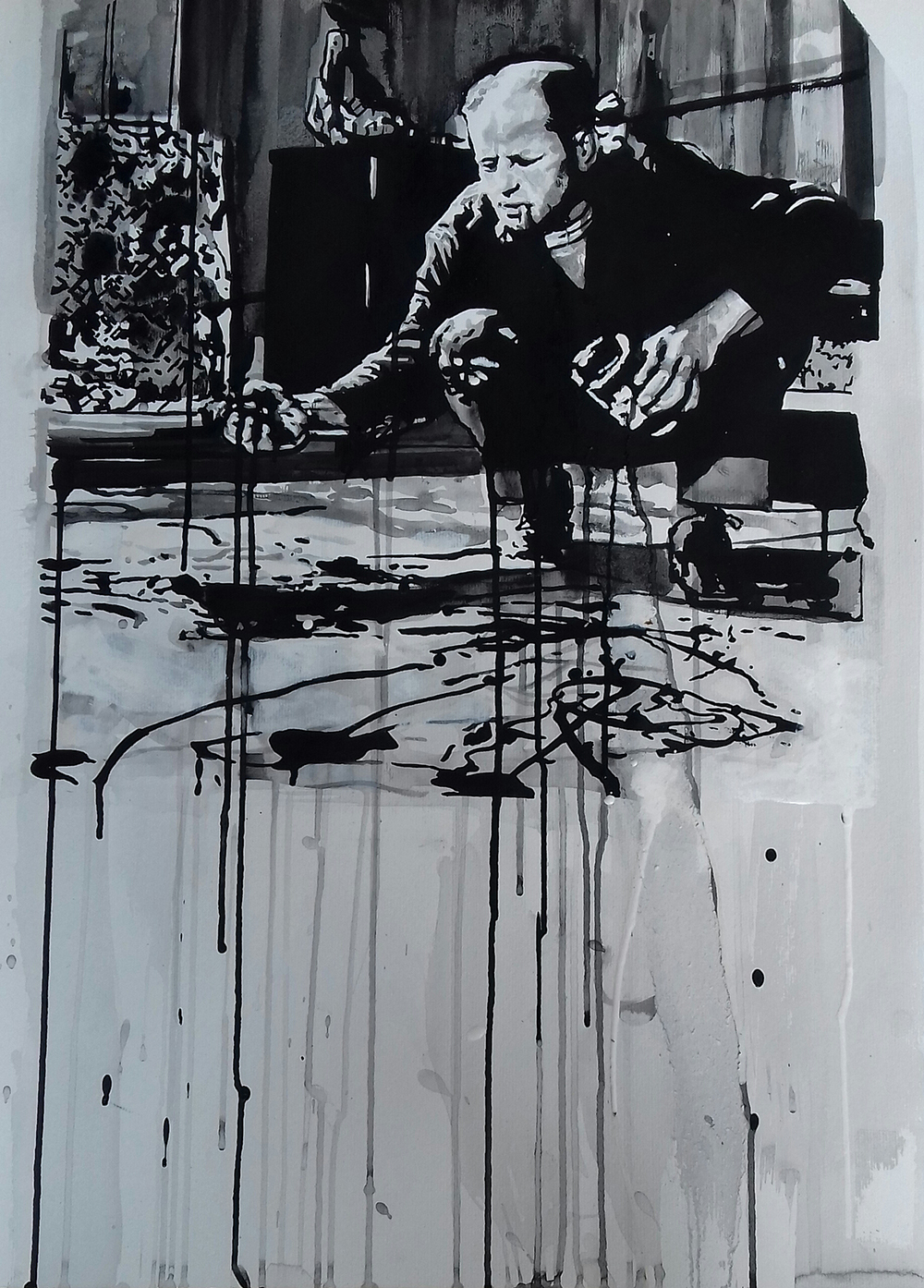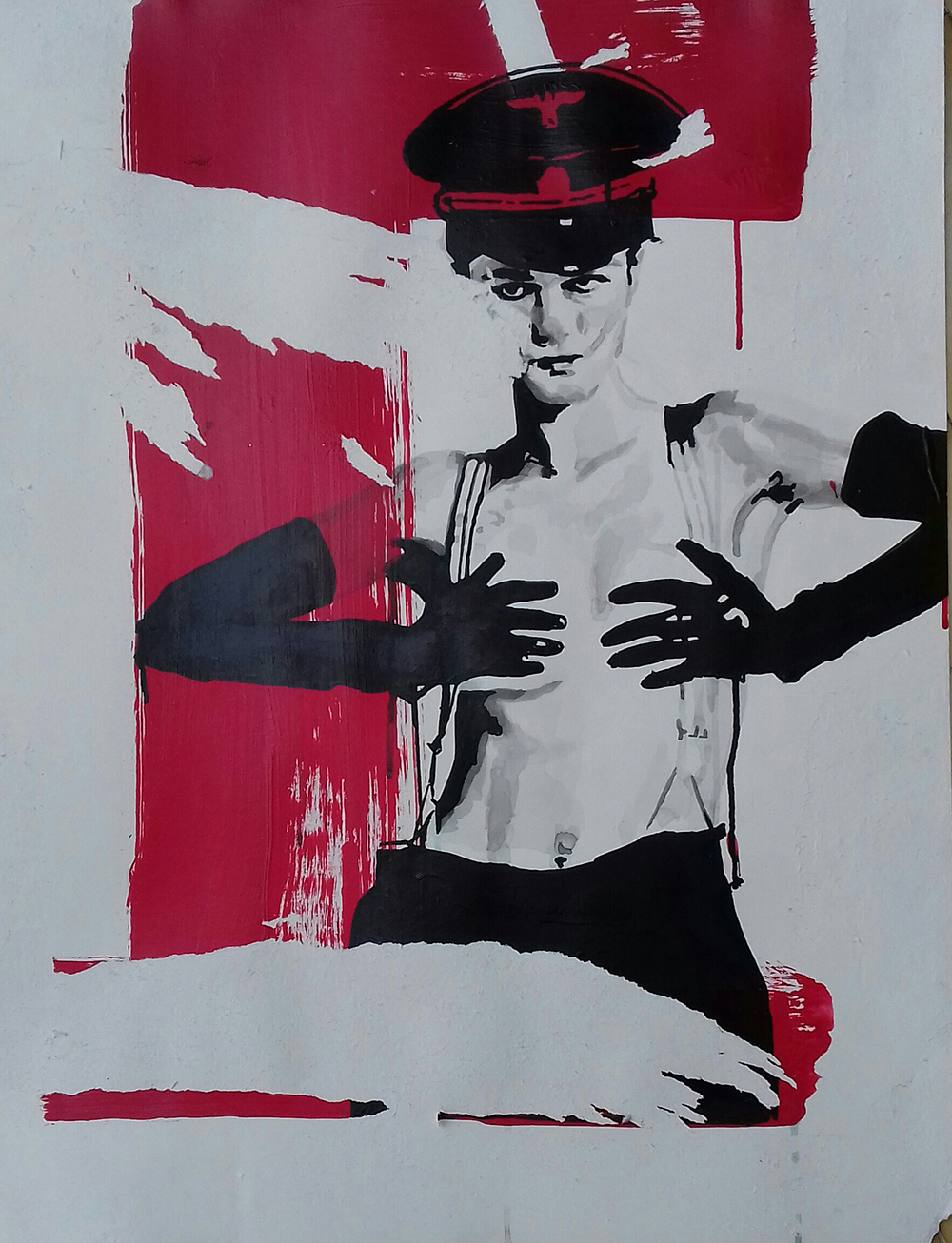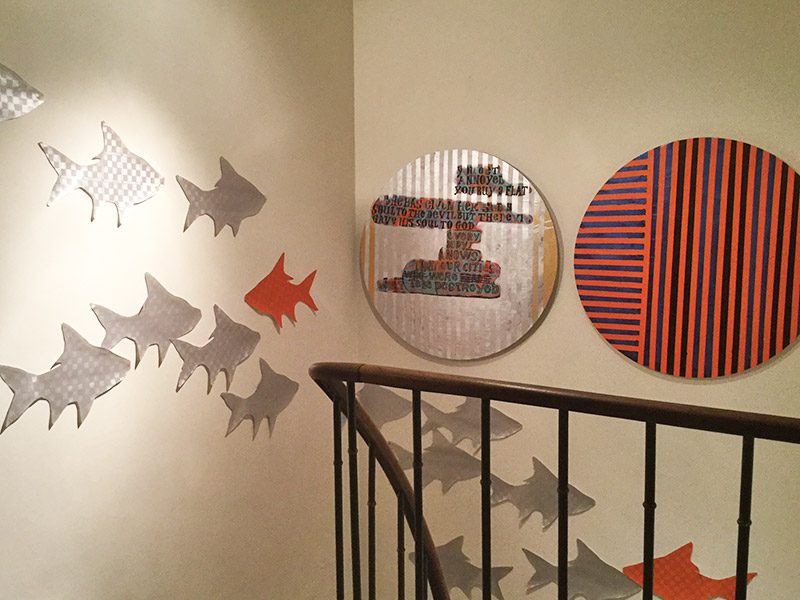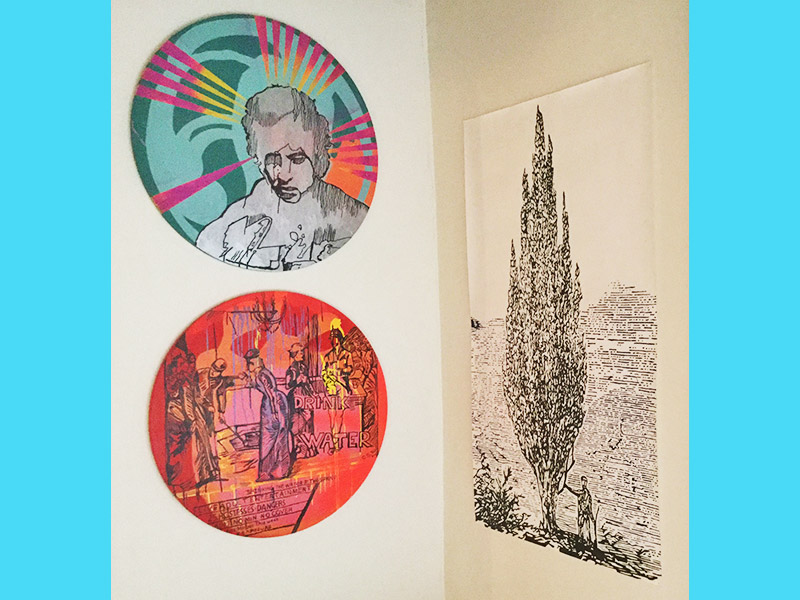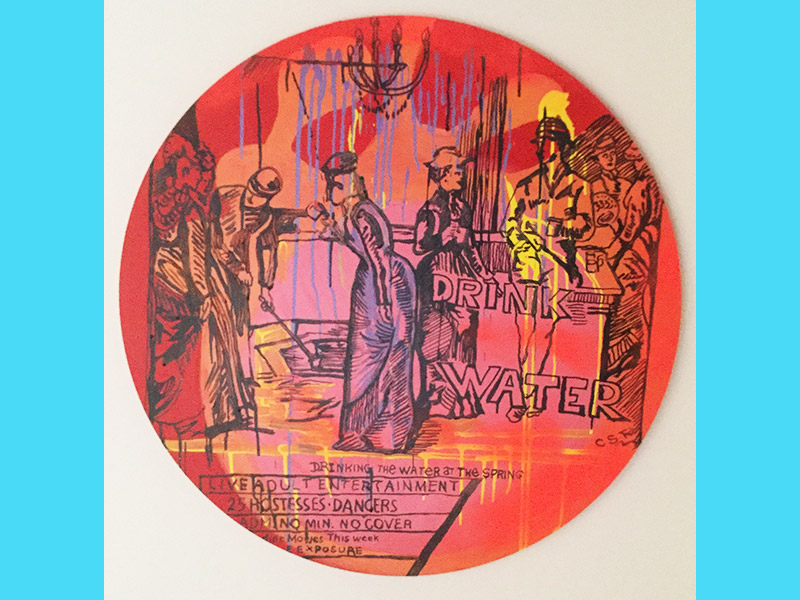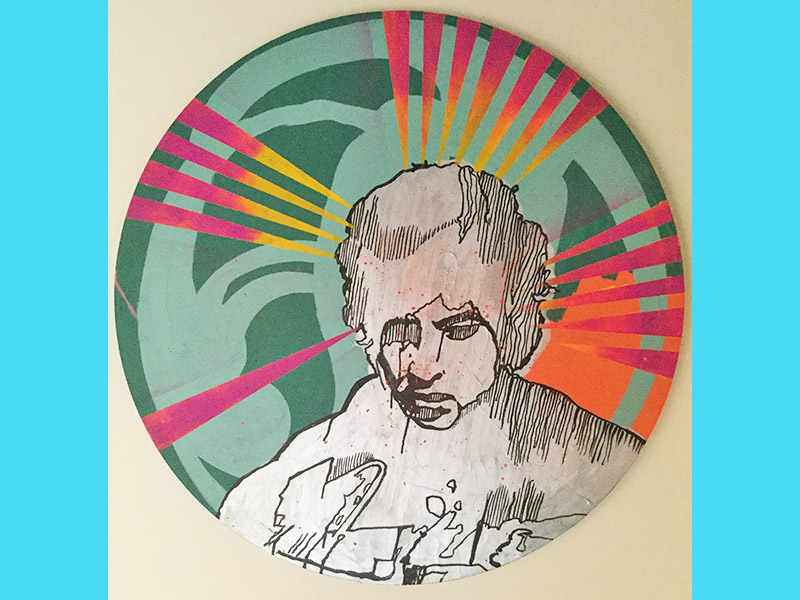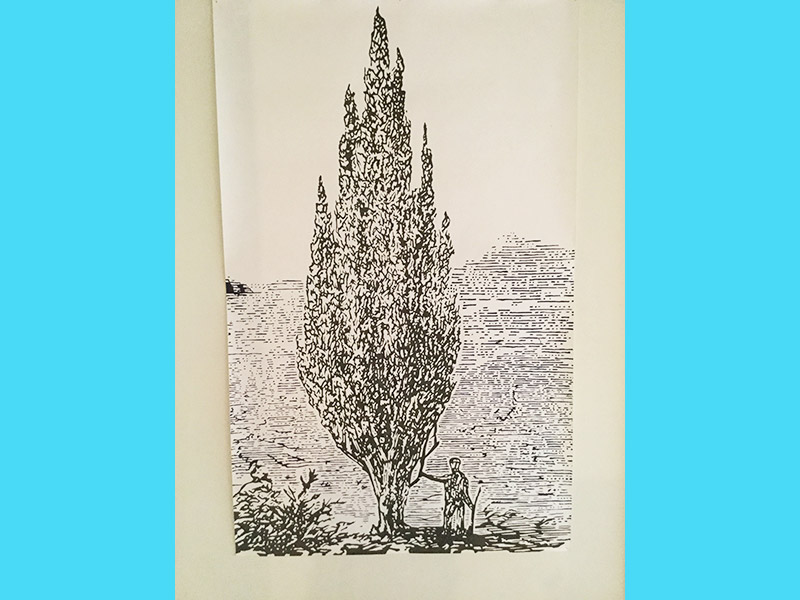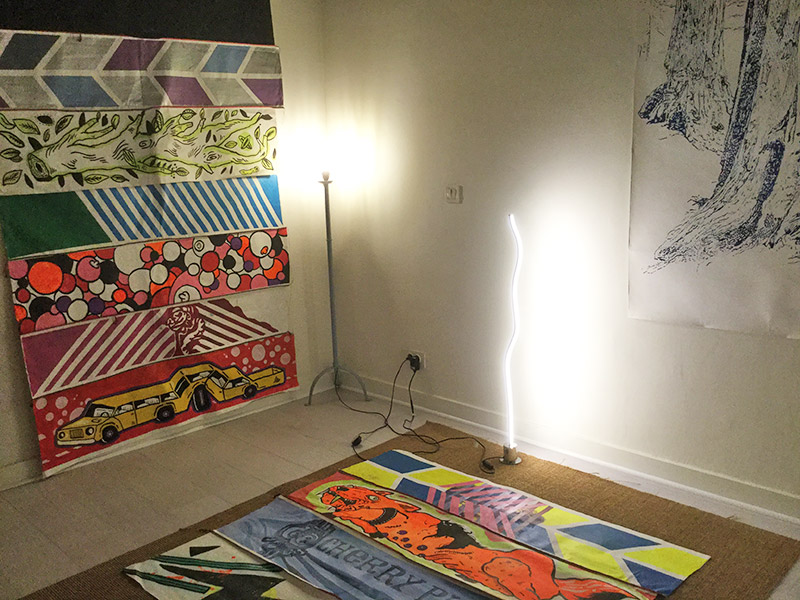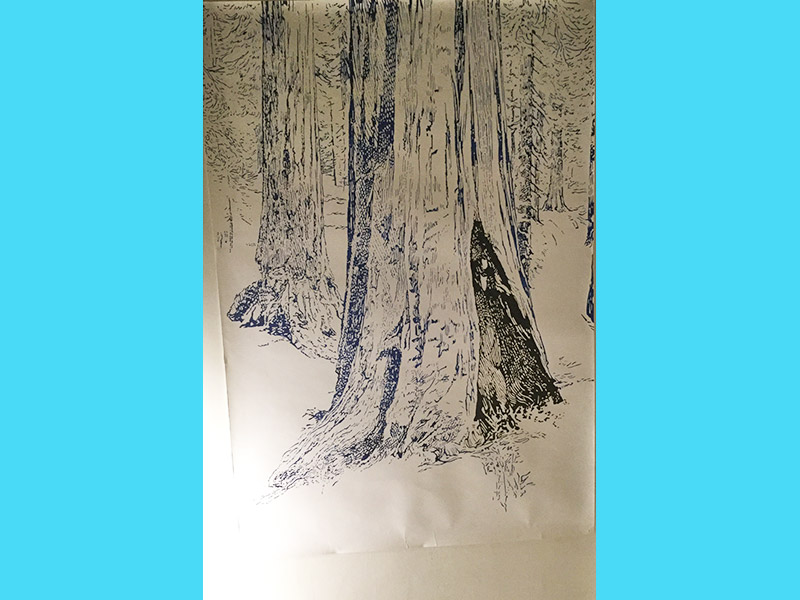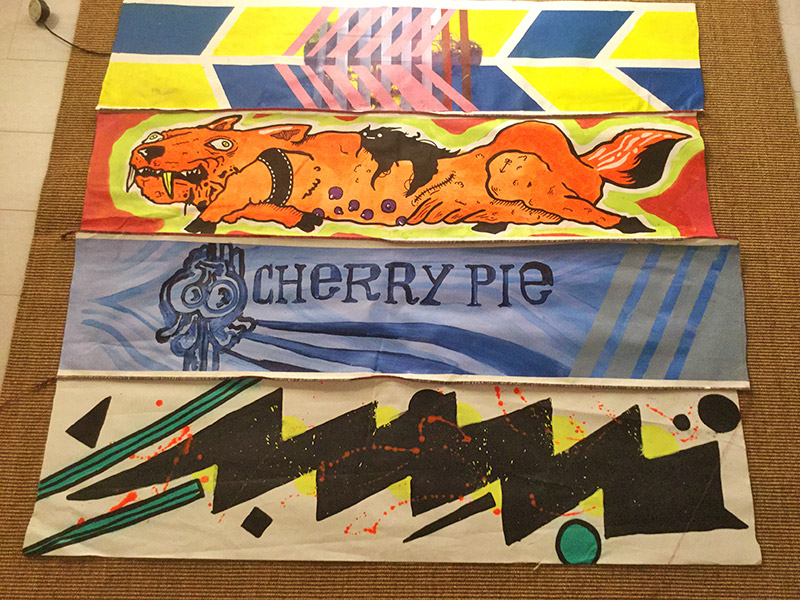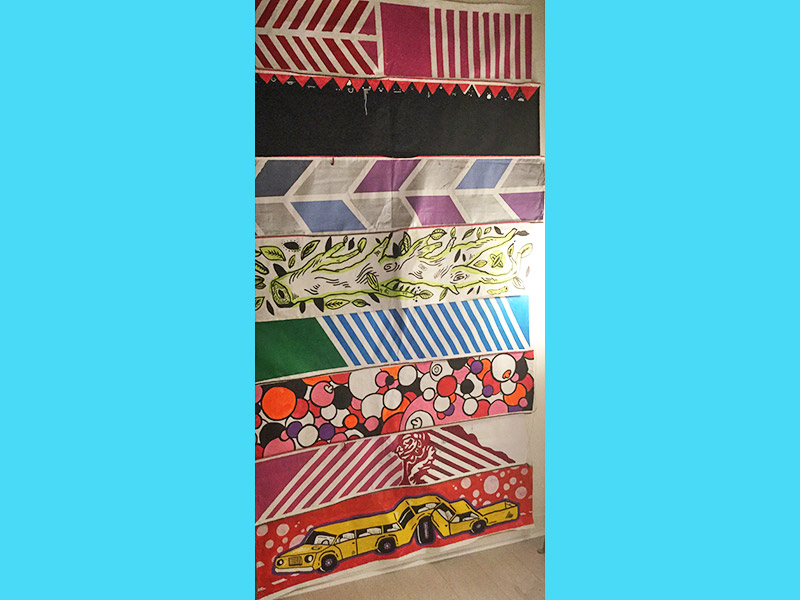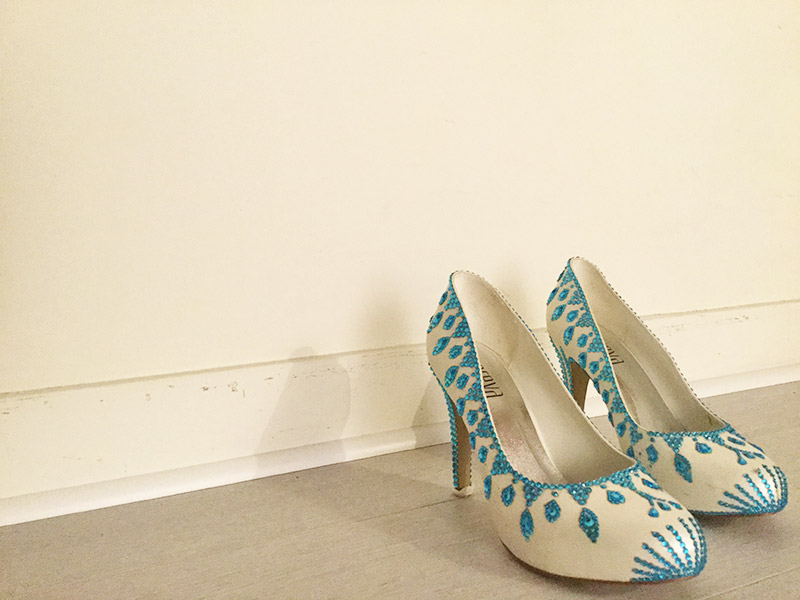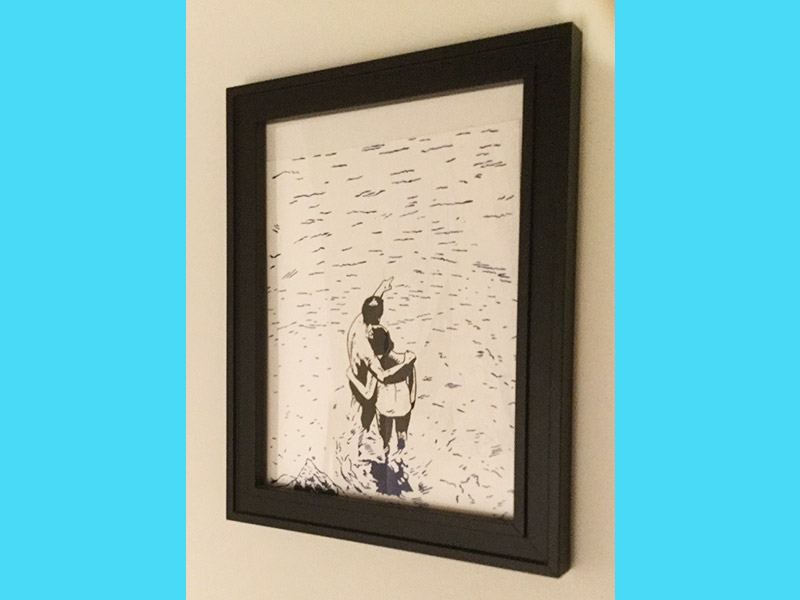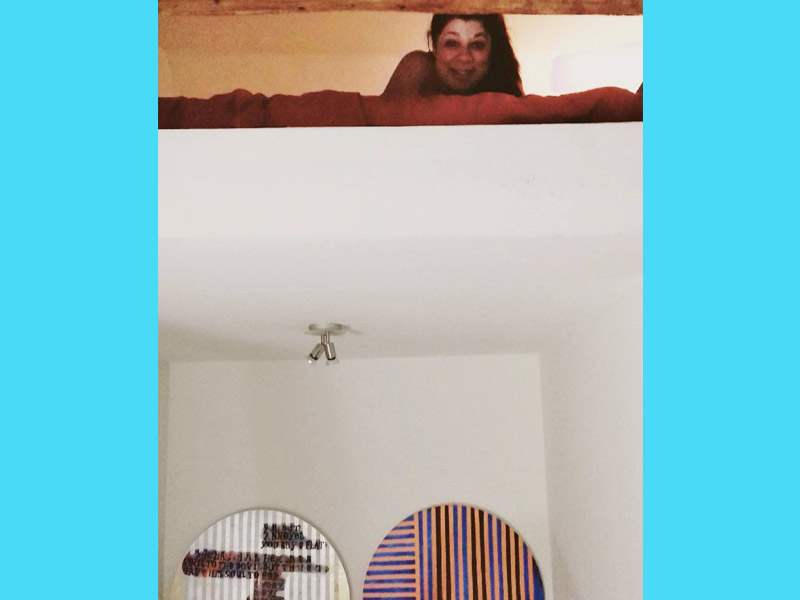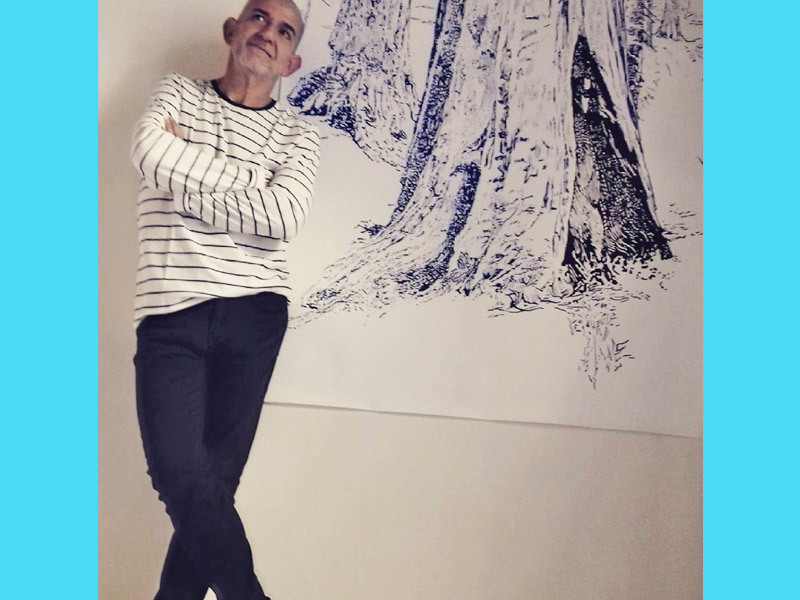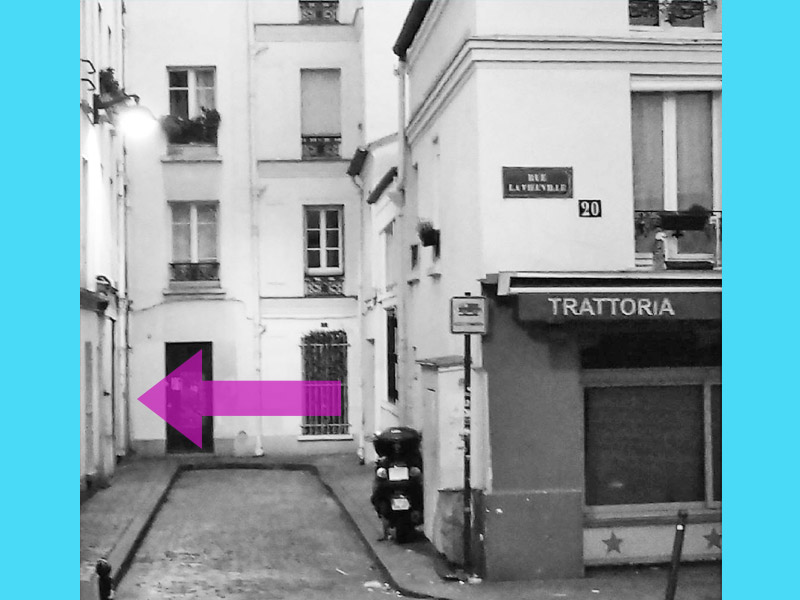SHIKI MIKI GALLERY PARIS
SHIKI MIKI Paris
Shiki Miki Paris est un appartement ancien de 35m2 situé à Montmartre. Son objectif principal est l’accueil d’artistes lors de courts séjours afin qu’ils puissant absorber la vie de la cité tout en pouvant travailler et présenter le résultat de leur séjour sur rendez-vous. Chaque résidence sera diffusée sur le site internet de Shiki Miki Gallery et les réseaux sociaux. Notre objectif est d’établir une triangulation entre les trois espaces physiques de Shiki Miki: la Galerie à Lisbonne, le studio de Lagery près de Reims et Shiki Miki Paris.
Shiki Miki Paris is a 35 sqm ancient flat located in Montmartre. Its main focus is to host artists for short period of time, so that they can absorb the city life of Paris while being able to work and present the results of their stay by appointment. Each residency will be available on the Shiki Miki Gallery website and social networks for its diffusion. Our aim is to provide a transit between the three structures that triangulate the Shiki Miki physical spaces: Shiki Miki Gallery Lisbon, Lagery Studio close to Reims, France and Shiki Miki Paris.
Shiki Miki Paris é um apartamento antigo de 35 m2 situado em Montmartre. O seu objectivo principal é receber artistas durante curtos períodos de tempo para que possam absorver a vida da cidade de Paris, sendo possível trabalhar e mostrar os resultados da sua estadia por marcação. Cada residência conta com o site online da Shiki Miki bem como as redes sociais para a sua divulgação. O nosso objectivo é providenciar um movimento entre as três estruturas que triangulam os espaços físicos da Shiki Miki: a Galeria em Lisboa, Lagery Studio perto de Reims, França e Shiki Miki Paris.

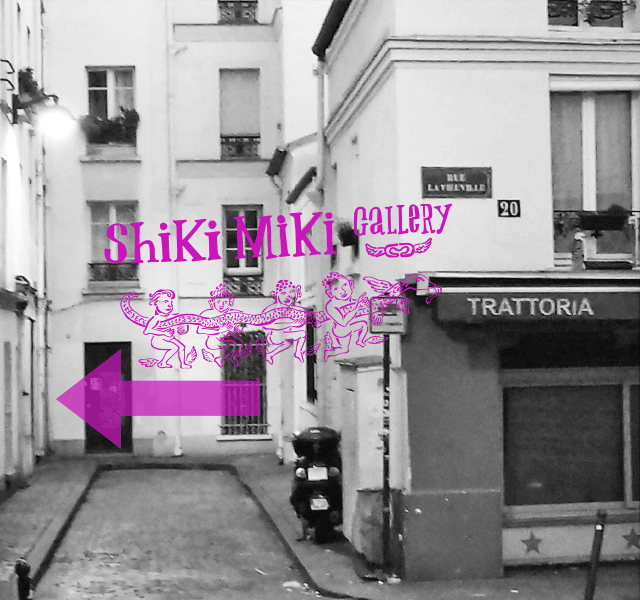
Ça Je Peux Le Faire Aussi
Ça Je Peux Le Faire Aussi
Ivo Bassanti & Pedro Amaral
Borderlovers is a Portuguese artist duo composed by Ivo Bassanti (Lisbon, 1979) and Pedro Amaral (Lisbon, 1960). Their work focuses mainly on the areas of painting and drawing, but also explores video and sound.
They met at the turn of the millennium in the dynamic artistic scene of the 90s, a decade that was marked in Portugal by alternative artistic projects and exhibitions to its institutional system and industry. They quickly became friends and soon accomplices and compagnons de route.
The ZDB Gallery, where Bassanti had his studio for many years and where both participated in several exhibitions and the cycle of exhibitions “Too Drunk to Fuck” commissioned by the artist João Fonte Santa, were the two contexts in which they have come closest.
In 2010 the first serious talks about the mutual desire to create and develop work as an artist duo take place. Both made other partnerships – Amaral with Sparring Partners (collective project of contemporary art founded in 1995 with Alice Geirinhas and João Fonte Santa) and Bassanti with Binau, among others. The name Borderlovers appears at this point. It begins by being a self-irony exercise because both are by that time dealing with psychiatric problems and is a reference / deviation from the clinical concept borderline.
In March / April 2017 they make an artistic residence at the Corny Boots Studios, Bassanti’s productive structure in Lagery, France. During five weeks of great production they materialize a considerable body of work. There is an urgency to produce that is not compatible with the academic scruples and they find solutions to continue their collaboration remotely with the help of communication technologies.
The accident and chance to which both had always attached great importance in their individual work becomes almost a dogma. But it is a liberating and gestural dogma, made of brushstrokes and dripping. They are joined by a passion for representation, appropriation, ink, quantity and improvisation. Painting as a constant adventure.
The passion for travelling also connects them. The physical journey (Bassanti made remarkable journeys and artistic residences in India, Brazil and Cabo Verde, among others) and the journey meaning life and creation, as well as small journeys that happen whenever one starts a new project.
They like to refer to the Christmas Truce (term used to describe the unofficial ceasefires that occurred along the Western Front during World War I in Christmas of 1914) as a sort of avatar of Borderlovers work and thoughts.
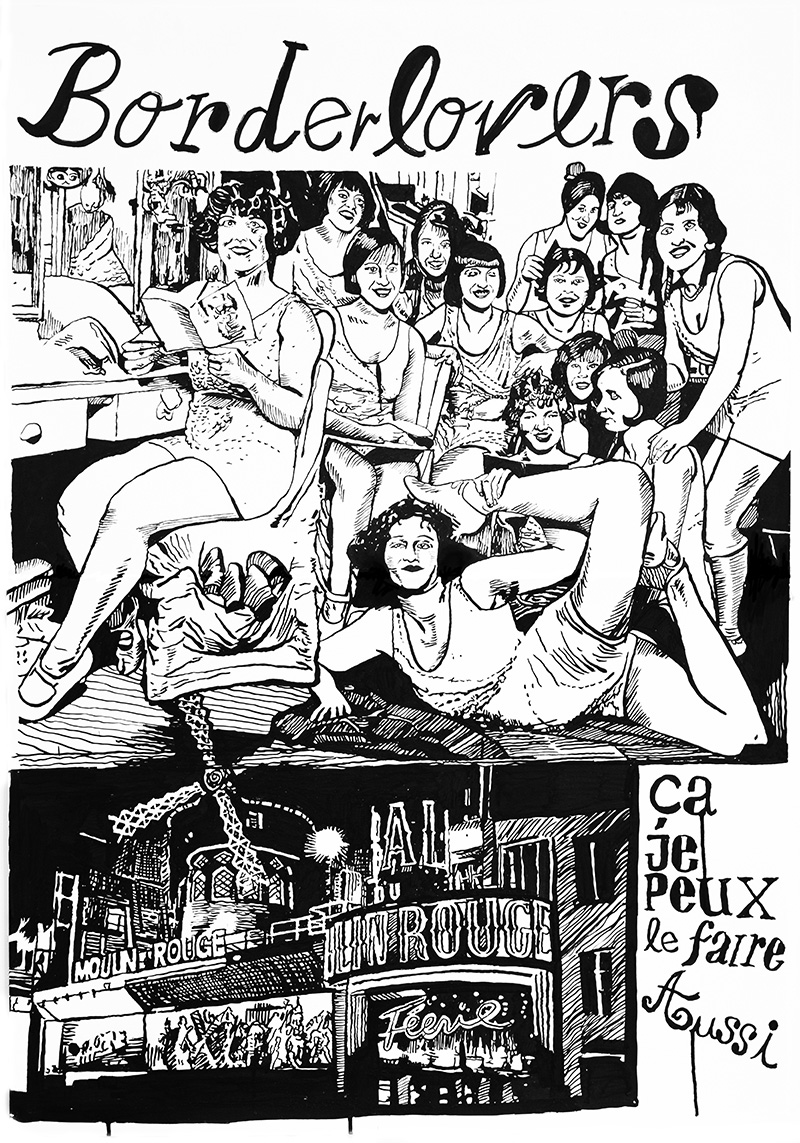

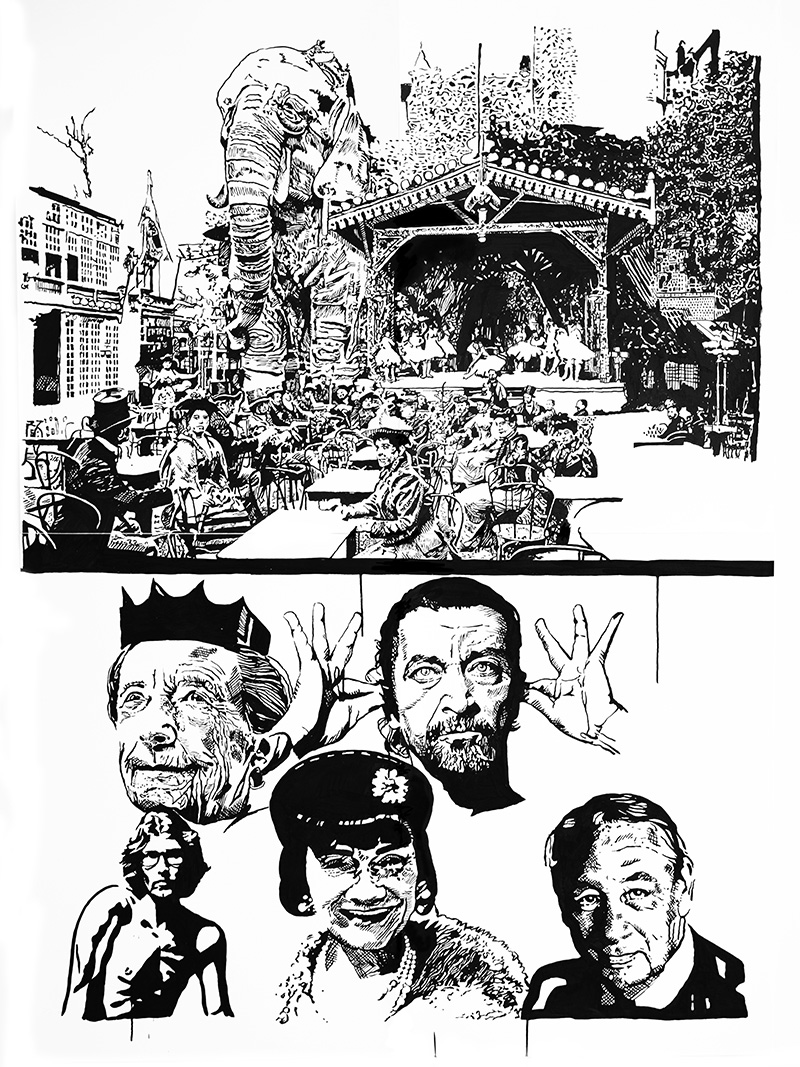
Project for a Great Honey Moon
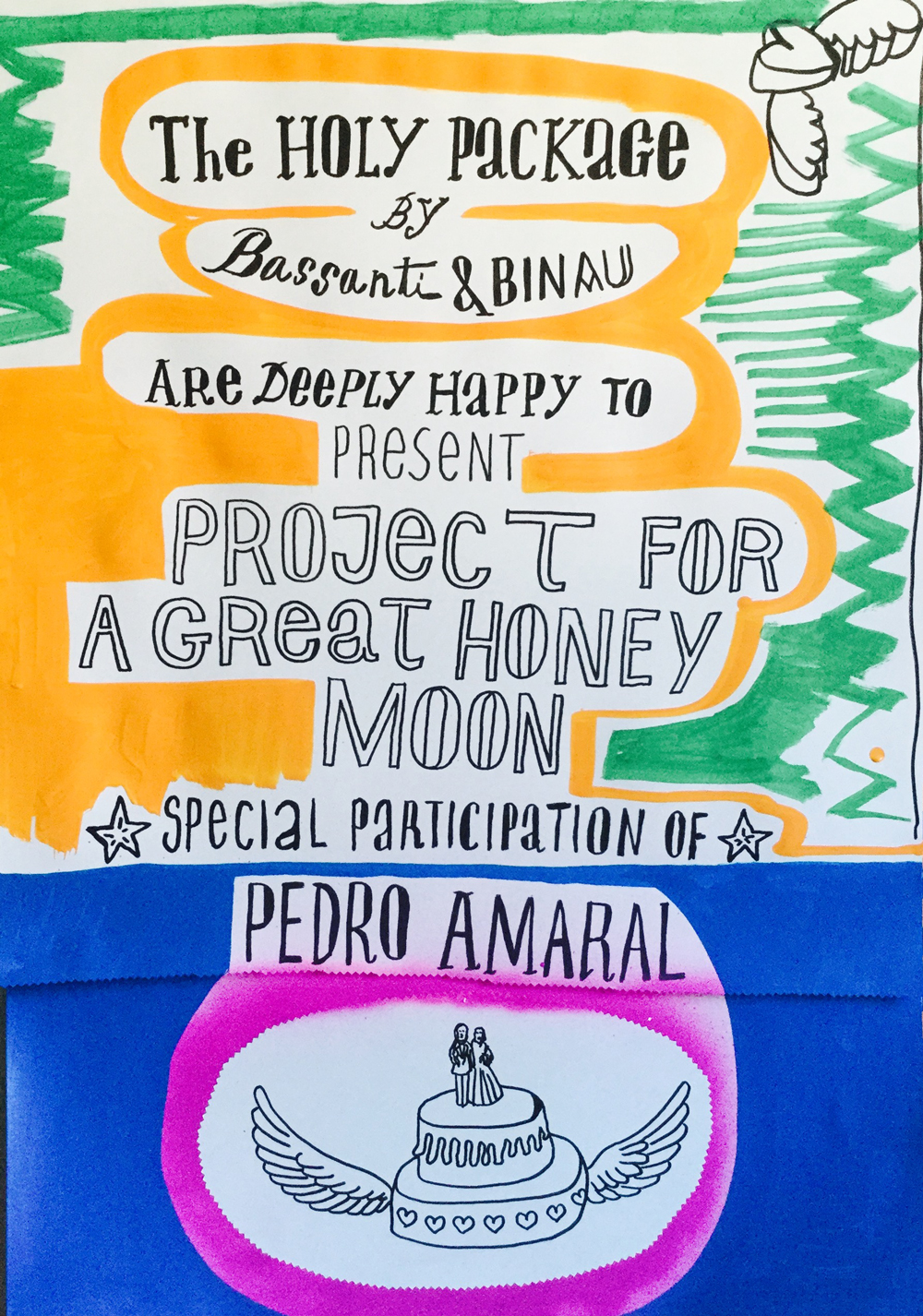
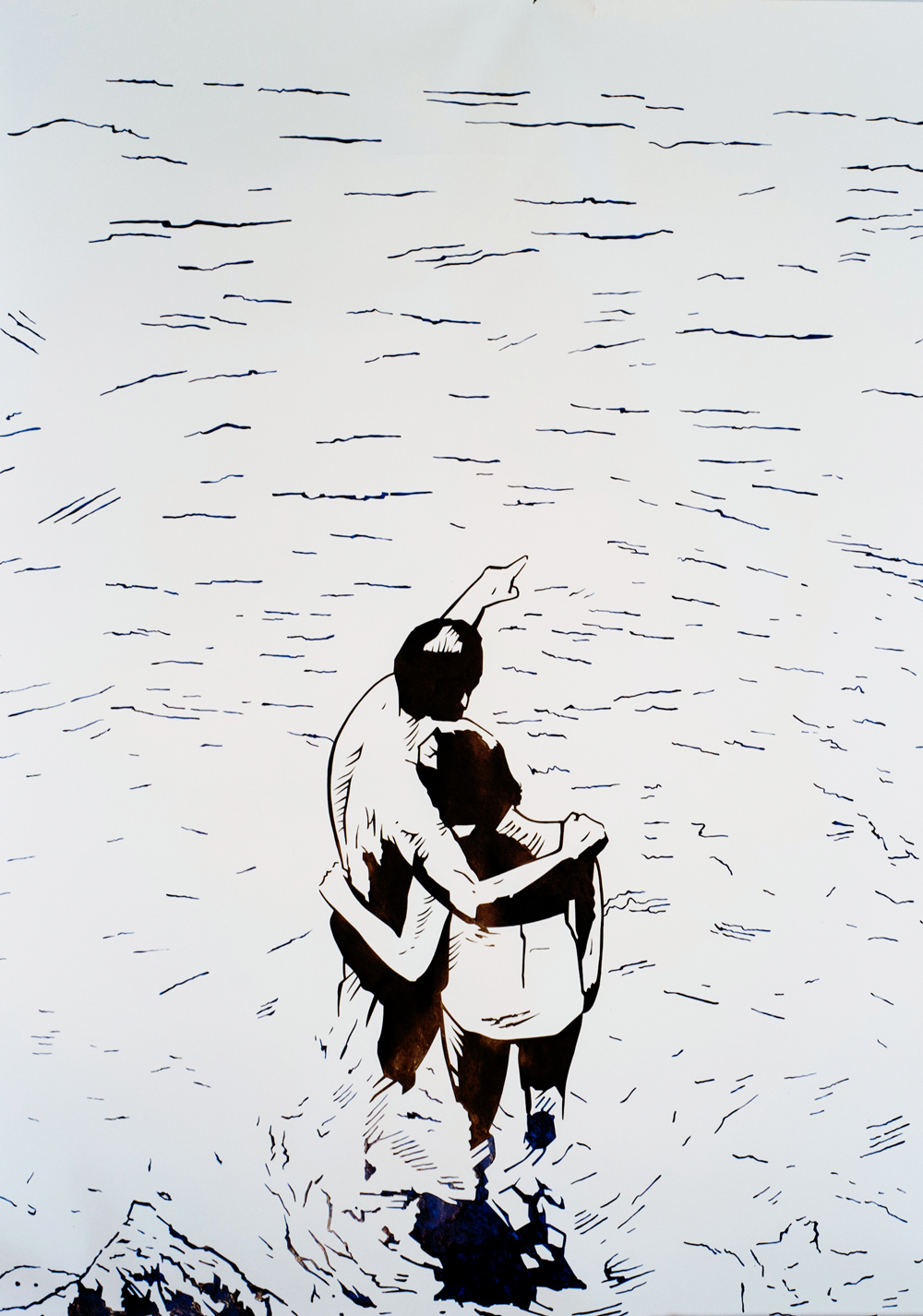
A Arte enquanto Pudim – texto de Dulce D. Leite, com leitura de Patricia Andrade.
L´Art Comme un Flan – texte par Dulce D. Lice, lecture par Héloïse Maréchal.
Will You Me ?
Will you me? est une vidéo qui se présente en triptyque pour deux raisons: esthétiques et narratives. Rien n’est pourtant réellement raconté, évoqué plutôt. Chaque écran n’a pas vraiment de lien avec les autres, on en cherche sans jamais vraiment trouver.
Les deux premiers qui apparaissent peuvent être interprétés comme deux visions de l’amour ; la première évoque la solitude, celle d’un lit où l’on ne trouve qu’un oreiller. On sent encore le corps chaud emmitouflé dans les draps. Ce ne sont que des plans fixes d’un lit vide que l’on distingue qu’à moitié dans la lumière tamisée de la pièce. Démarre simultanément à la droite de cet écran, un autre film. On découvre rapidement qu’il s’agit d’une publicité pour des mariages. Chacun fera son propre constat sur ce qui est ici montré de l’amour. Bien moins loin des clichés qu’on aimerait, on y voit les rues de Paris, des parures flamboyantes, un homme qui déambule en costume, une femme en robe de mariée qui le rejoint et puis, plus rien. L’utilisation de ce spot publicitaire ne relève pas uniquement du ridicule de la scène de fiançailles tel qu’on la montre. On est parfois séduits malgré nous par les images qui défilent sur l’écran. Le couple paraît radieux, la vie semble être si douce et délicieuse au milieu de ces bijoux. Mais la réalité se révèle constamment lorsque notre regard se déporte sur la gauche et que l’on retrouve le lit toujours vide. On se retrouve entre espoir et le désespoir, premier et second degré, bonheur préfabriqué et sentiments réels. Enfin, sur le dernier écran qui remplace le fond noir de la première minute de la vidéo, on retrouve une succession de plans d’un immeuble d’abord, puis d’un appartement rempli d’objets et de peintures colorées. C’est en fait une exposition de trois artistes portugais Bassanti, Binau et Pedro Amaral intitulé Project for a Great Honey Moon. La volonté d’intégrer cette exposition en rapport direct avec le thème de love stories est apparu non pas pour illustrer ce que pourrait être un « amour qui fait rêver » mais pour souligner la nécessité de créer au sein d’une relation. Ce qui est touchant ici, au delà de l’amour révélé au grand jour de deux personnes est le lien unissant les artistes autour du projet.
L’amour est aussi là où on ne l’attend pas.
Will you me? is a video screened as a triptych. There are two reasons for that: aesthetic and narrative. Nothing is actually narrated; it is rather evoked. Each screen does not really relate to the others, we can interpret some similarities but without ever really finding them.
The first two screens emerging from the pitch black can be interpreted as two visions of love. The first evokes solitude, that of a bed where one finds only one pillow. One still feels the warm body wrapped in the sheets. The video is composed of fixed shots of an empty bed in the subdued light of the room. At the same moment, another movie starts on the right of the screen.
We quickly discover that it is an advertisement for weddings. One can make its own statement about what is shown of love here. More than the clichés we see; the streets of Paris, some flamboyant ornaments from a castle, a man wandering in a tuxedo, a woman in a wedding dress who joins him and then, nothing; this ad illustrates that they are not really selling us weddings but the feeling of “love of love” and its display to other people’s eyes. However, this commercial is not just absurd because the images scrolling on the screen can seduce one’s mind. The couple looks radiant; life seems to be so sweet and delicious amid these jewels. But reality is constantly revealed when our eyes go to the left to find the bed still empty.
We find ourselves between hope and despair, prefabricated happiness and real feelings.
Finally, on the last screen we see a succession of shots of a building first, then an apartment filled with objects and colorful paintings. It is actually an exhibition of three Portuguese artists Bassanti, Binau and Pedro Amaral entitled Project for a Great Honey Moon. The desire to integrate this exhibition in direct relation with the theme of love stories appeared not to illustrate what could be an “ideal love” but to emphasize the need to create within a relationship. What is moving here, beyond the love revealed in the broad daylight of two people, is the bond linking the artists around the project.
Love is also where you do not expect it.

